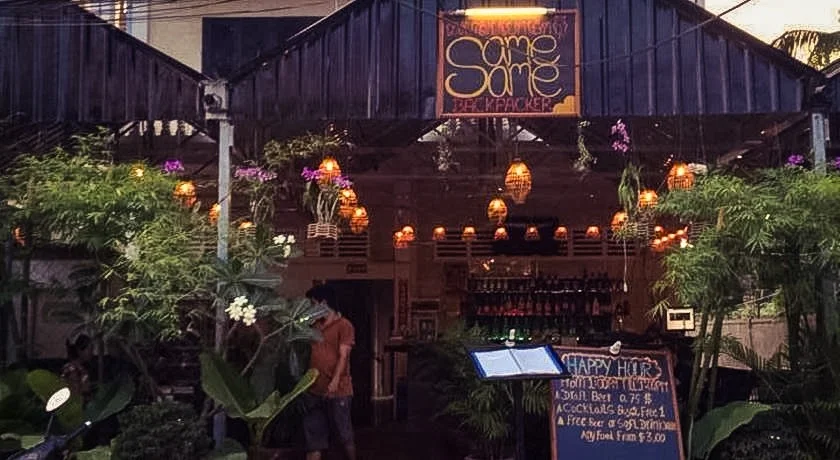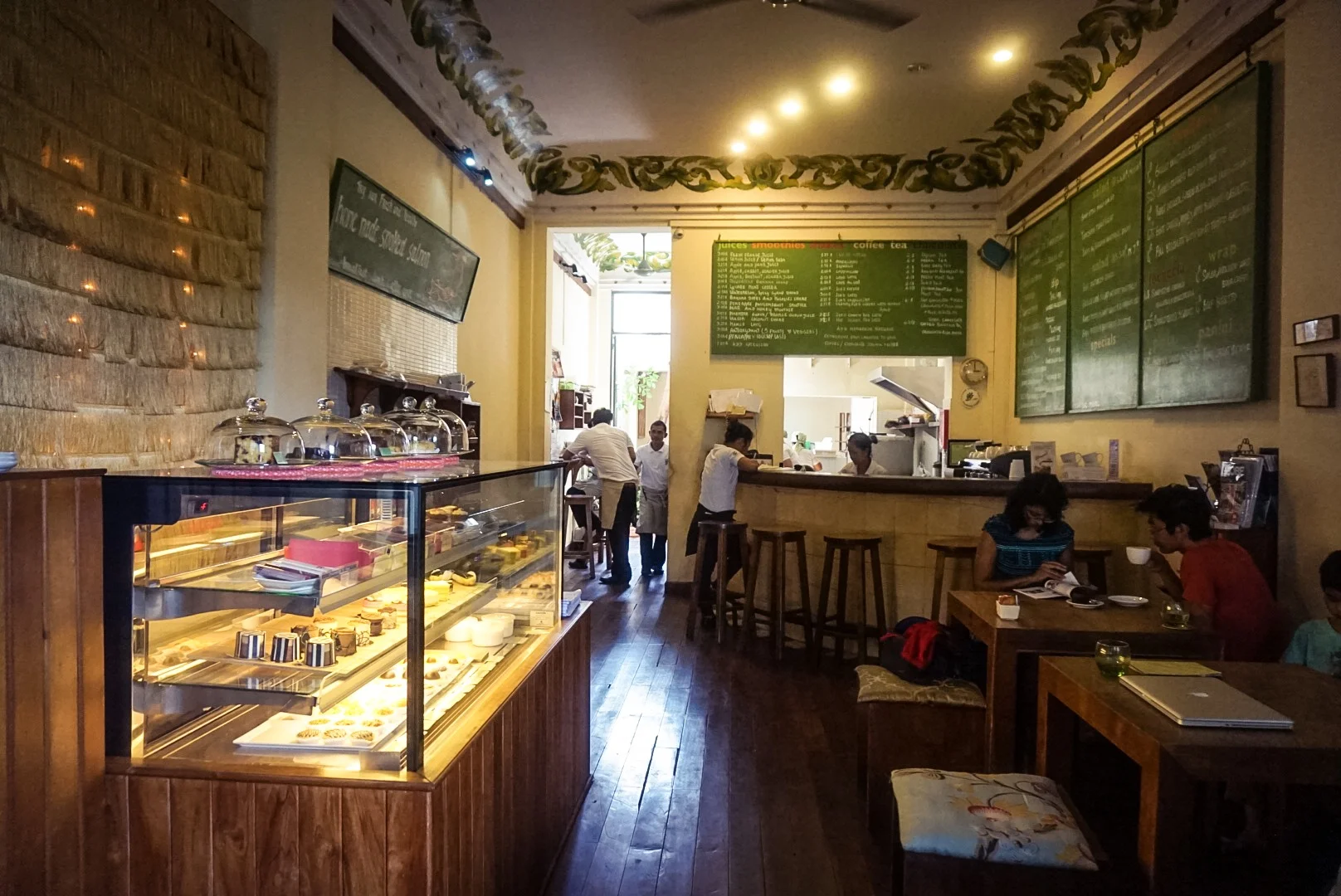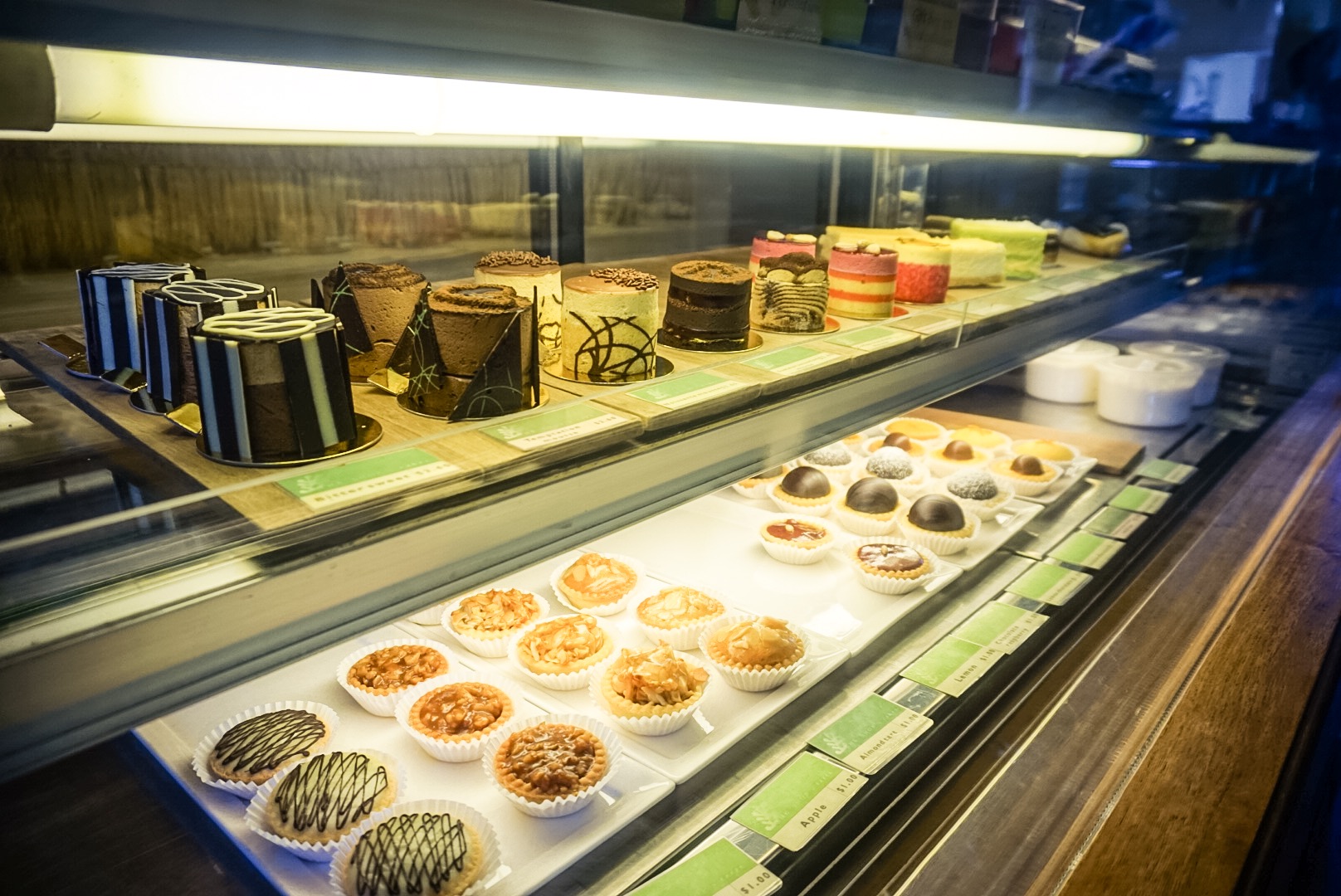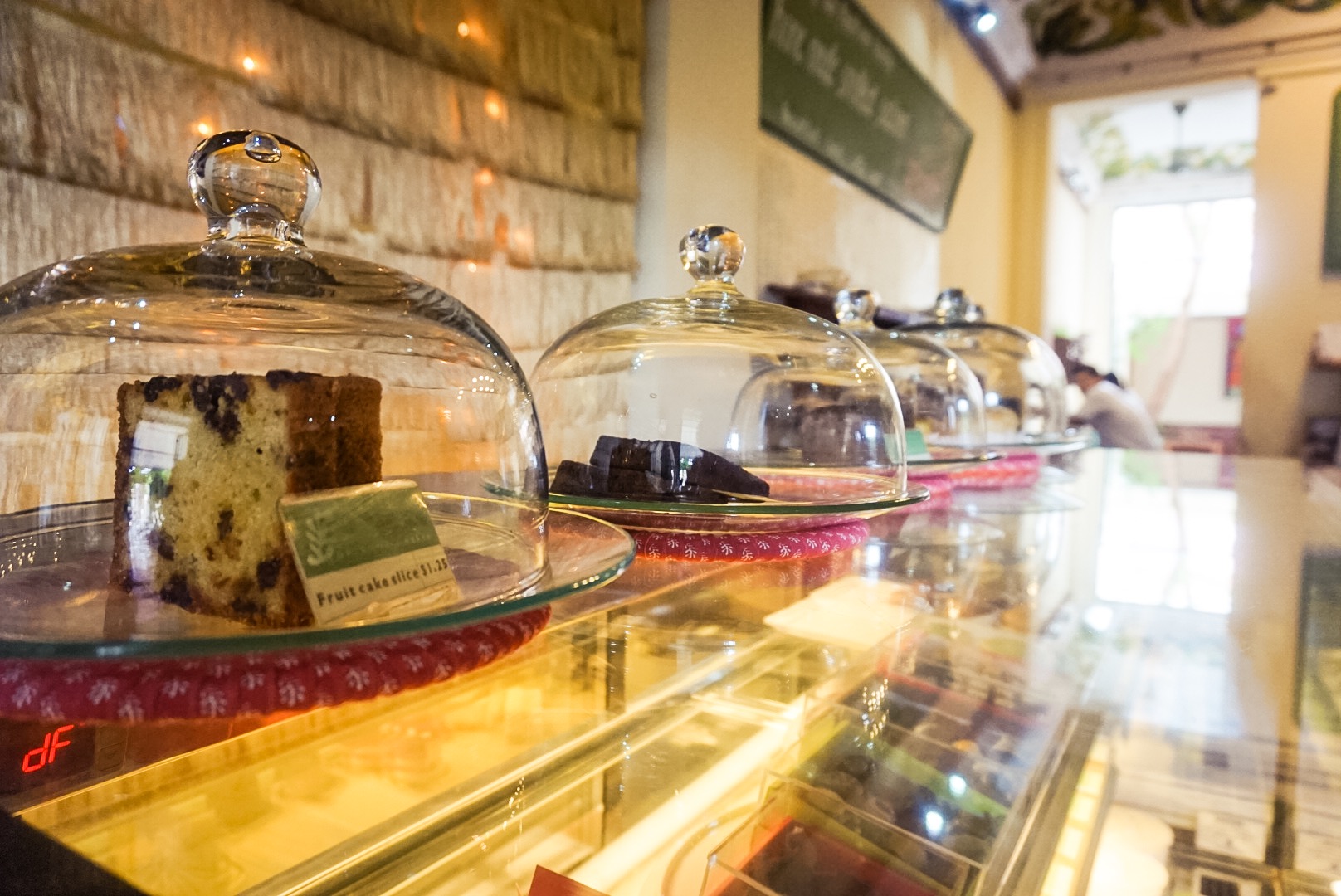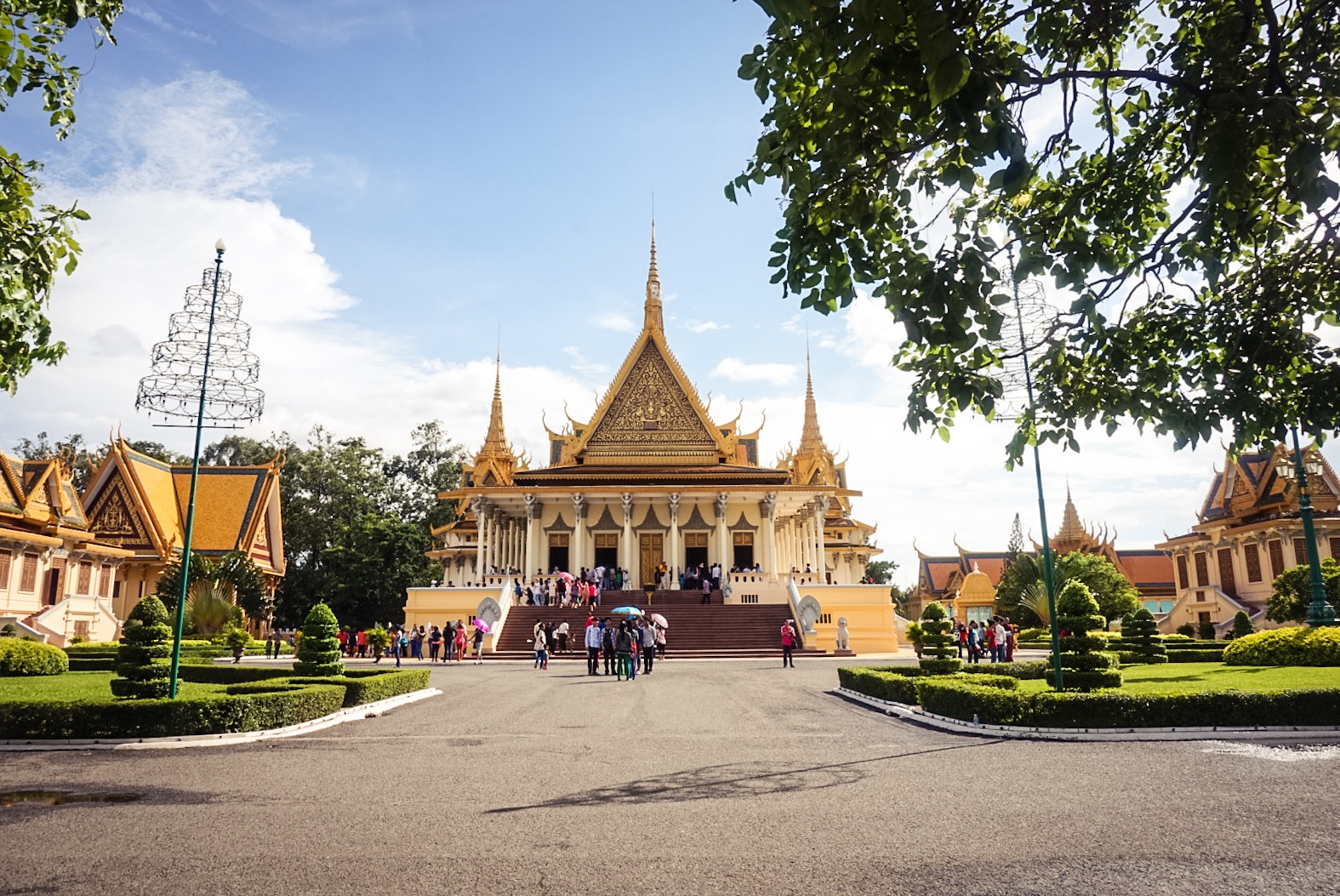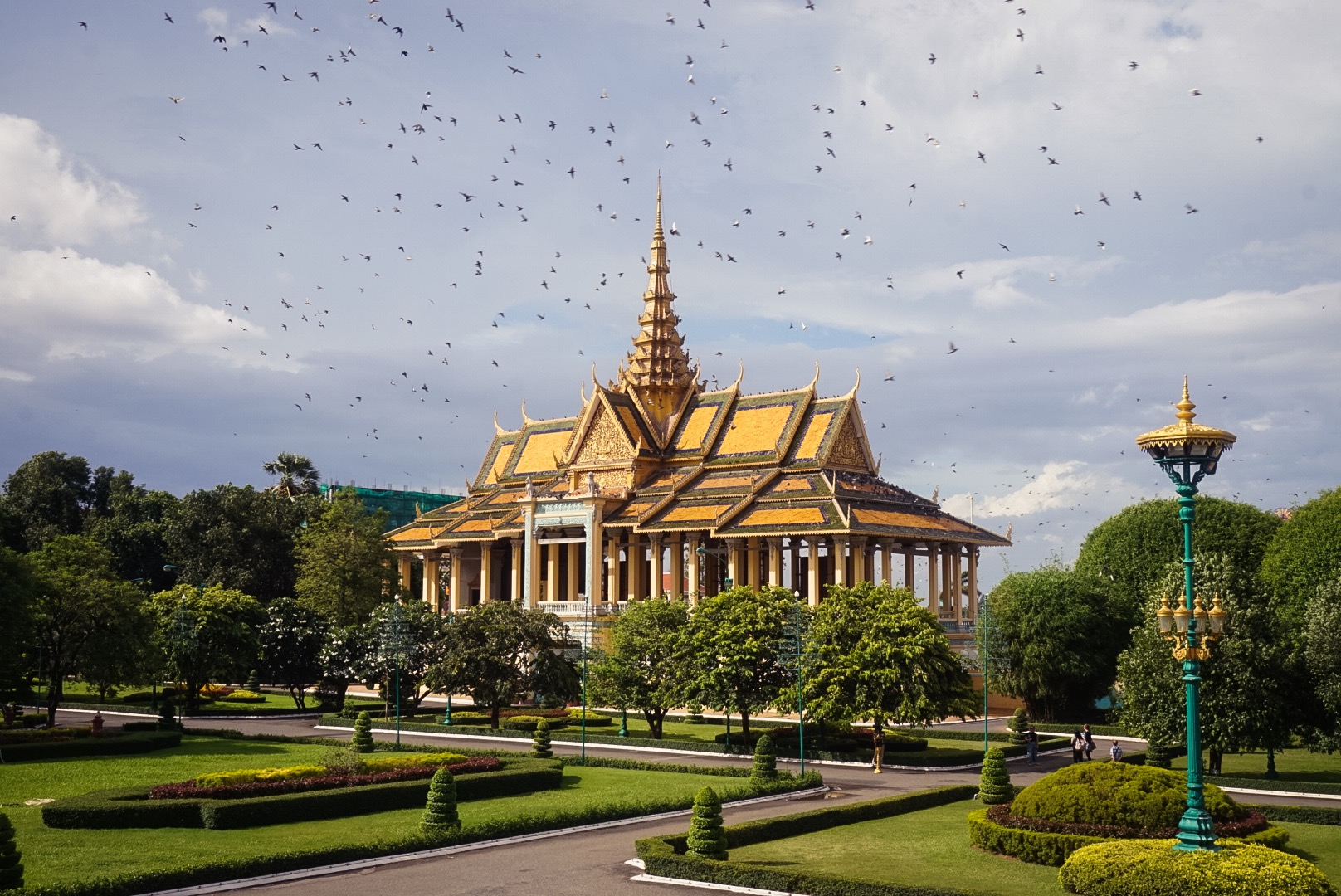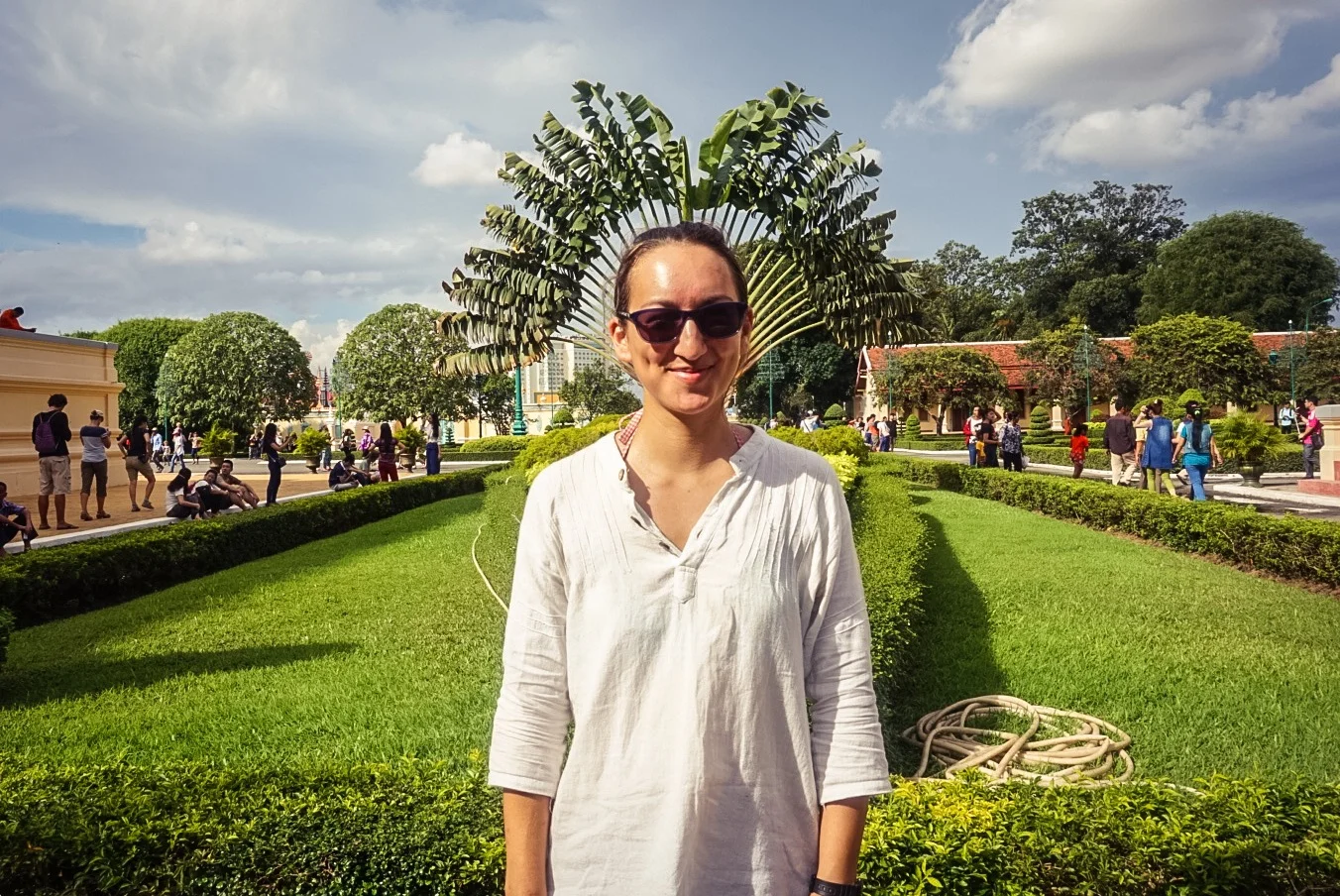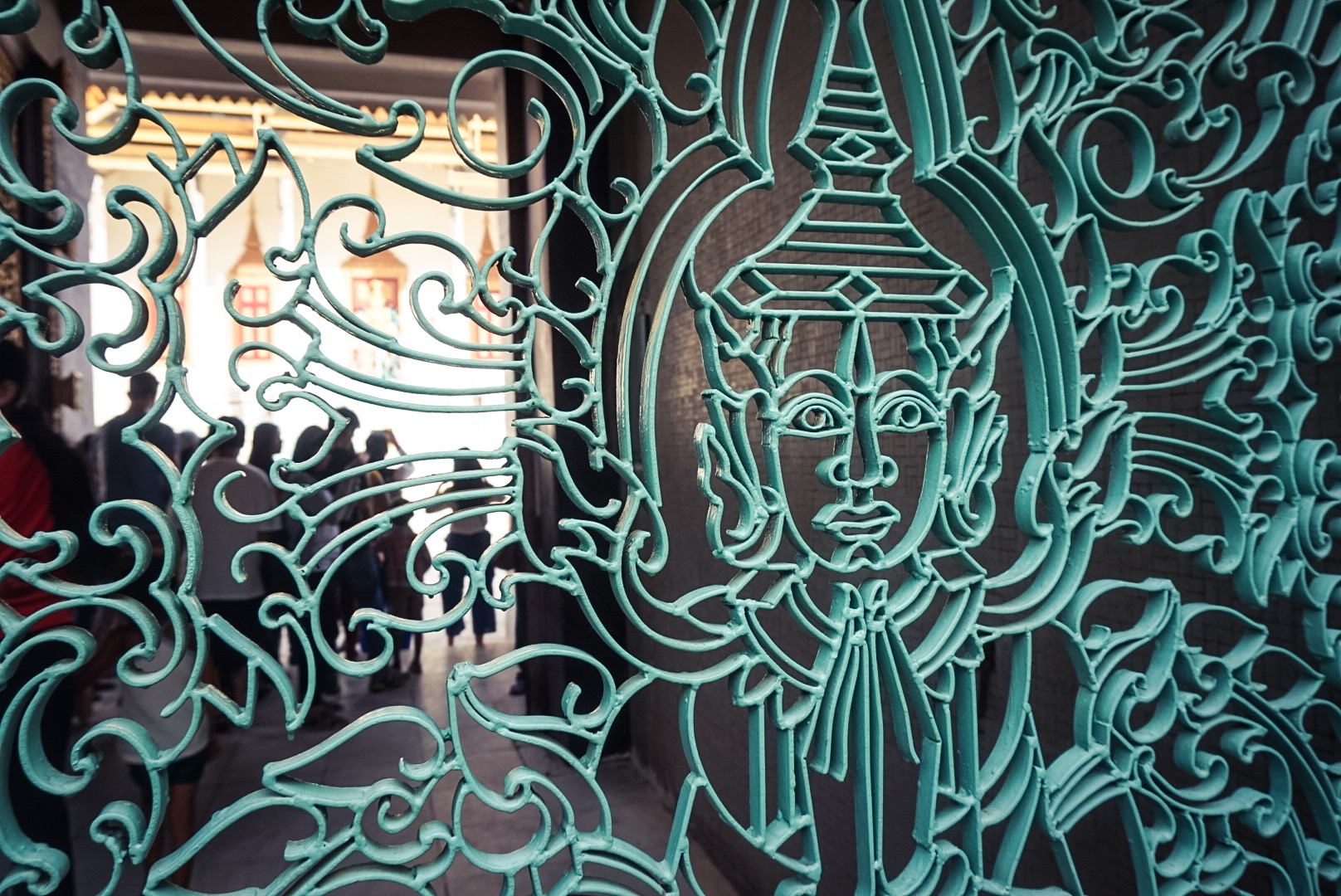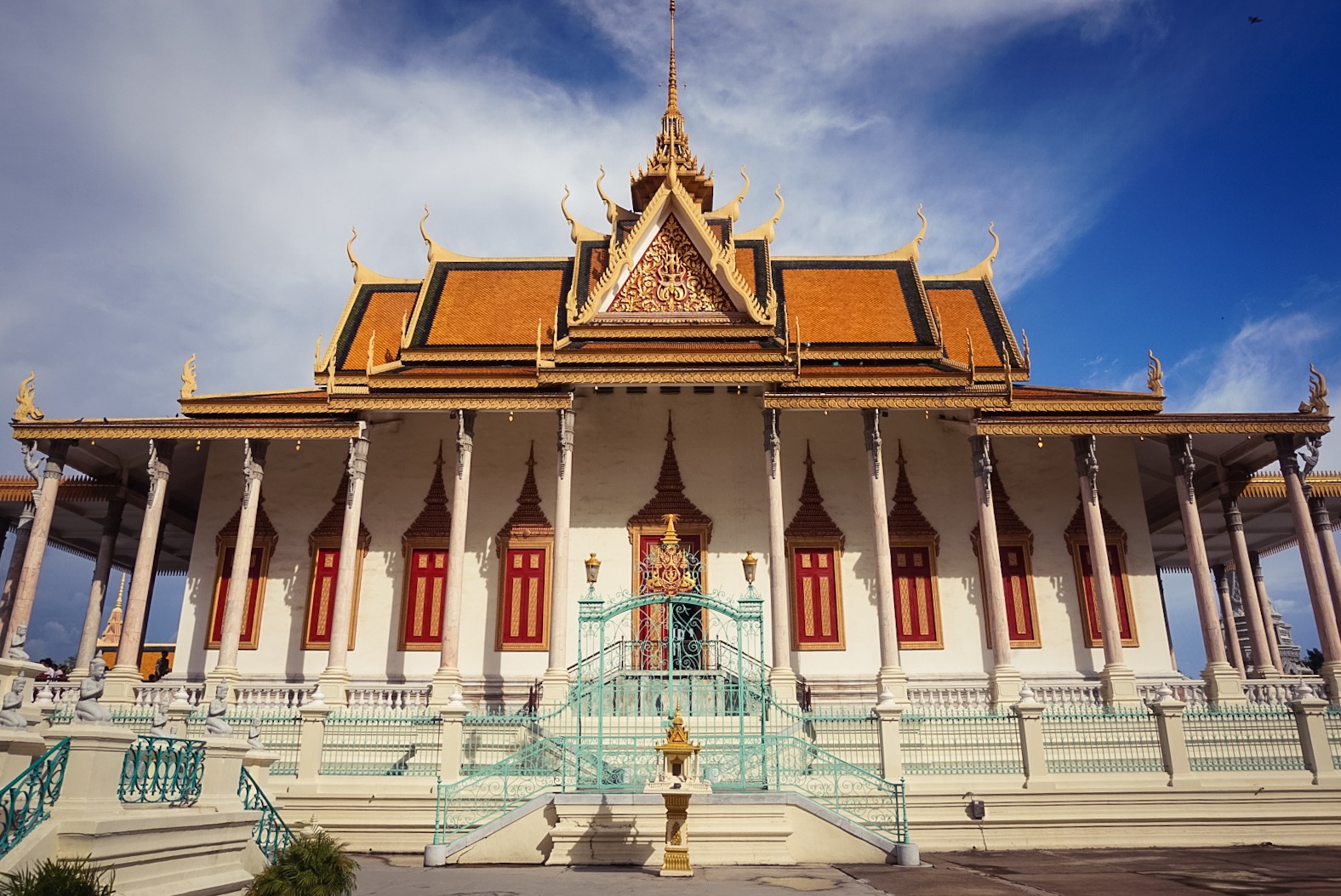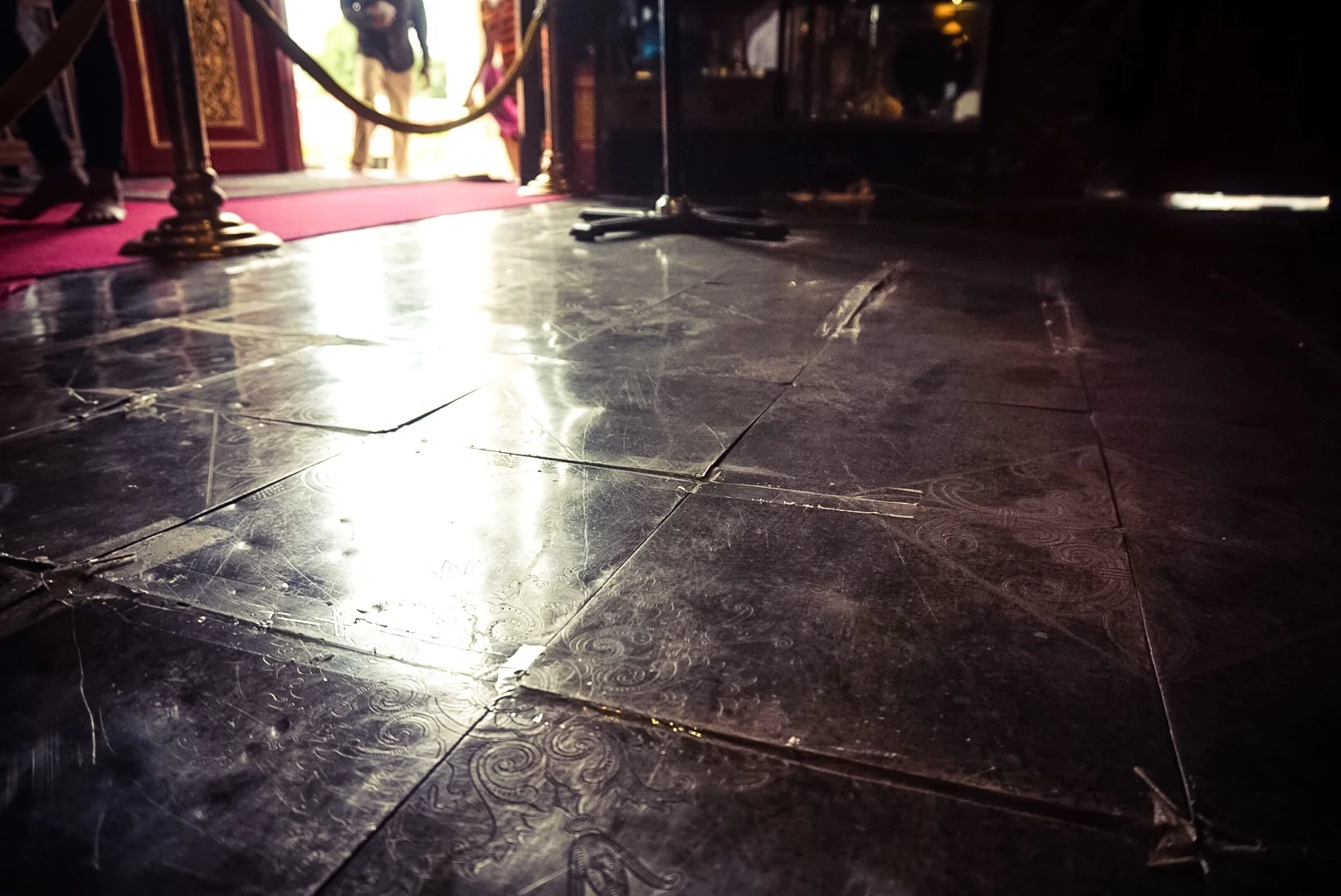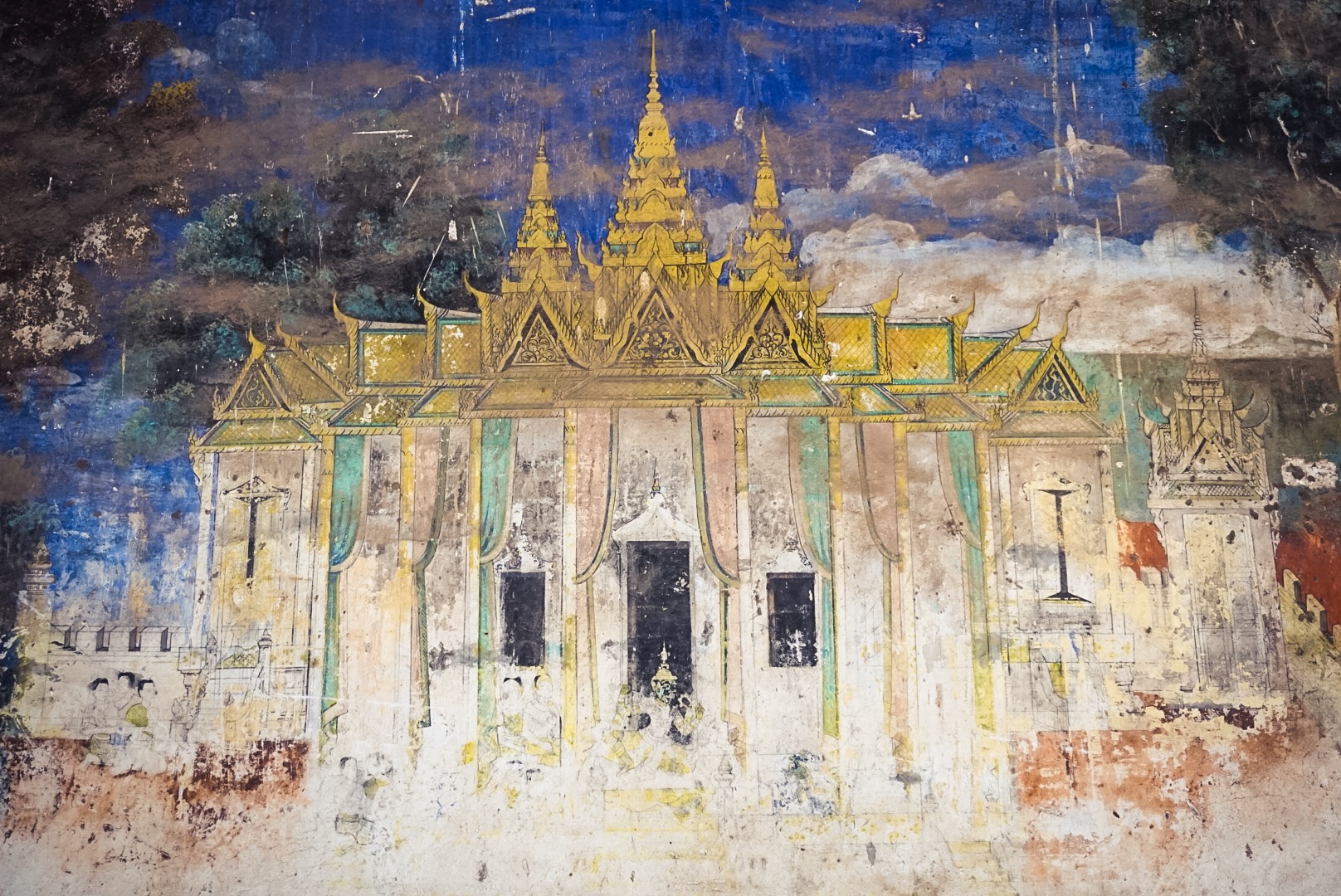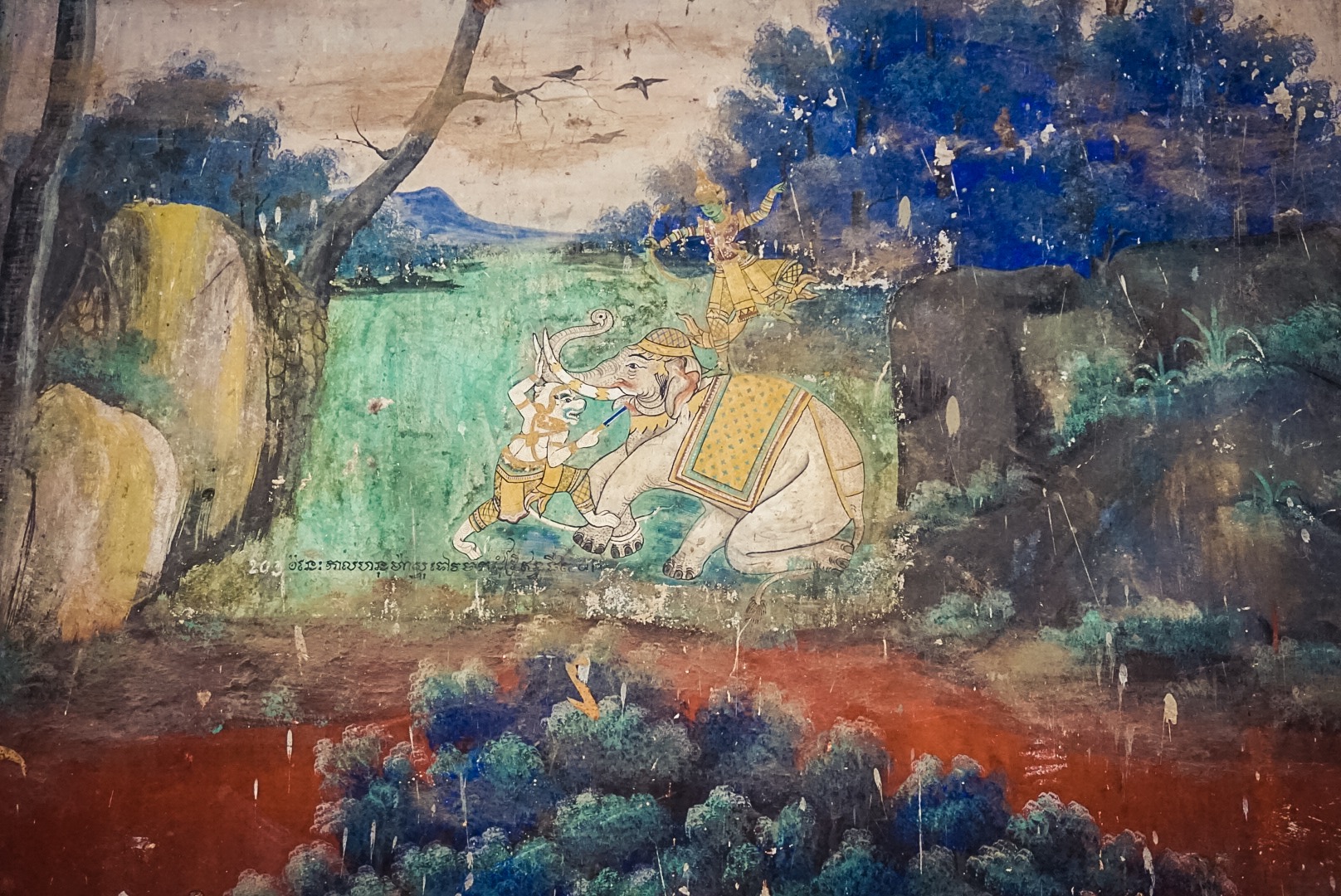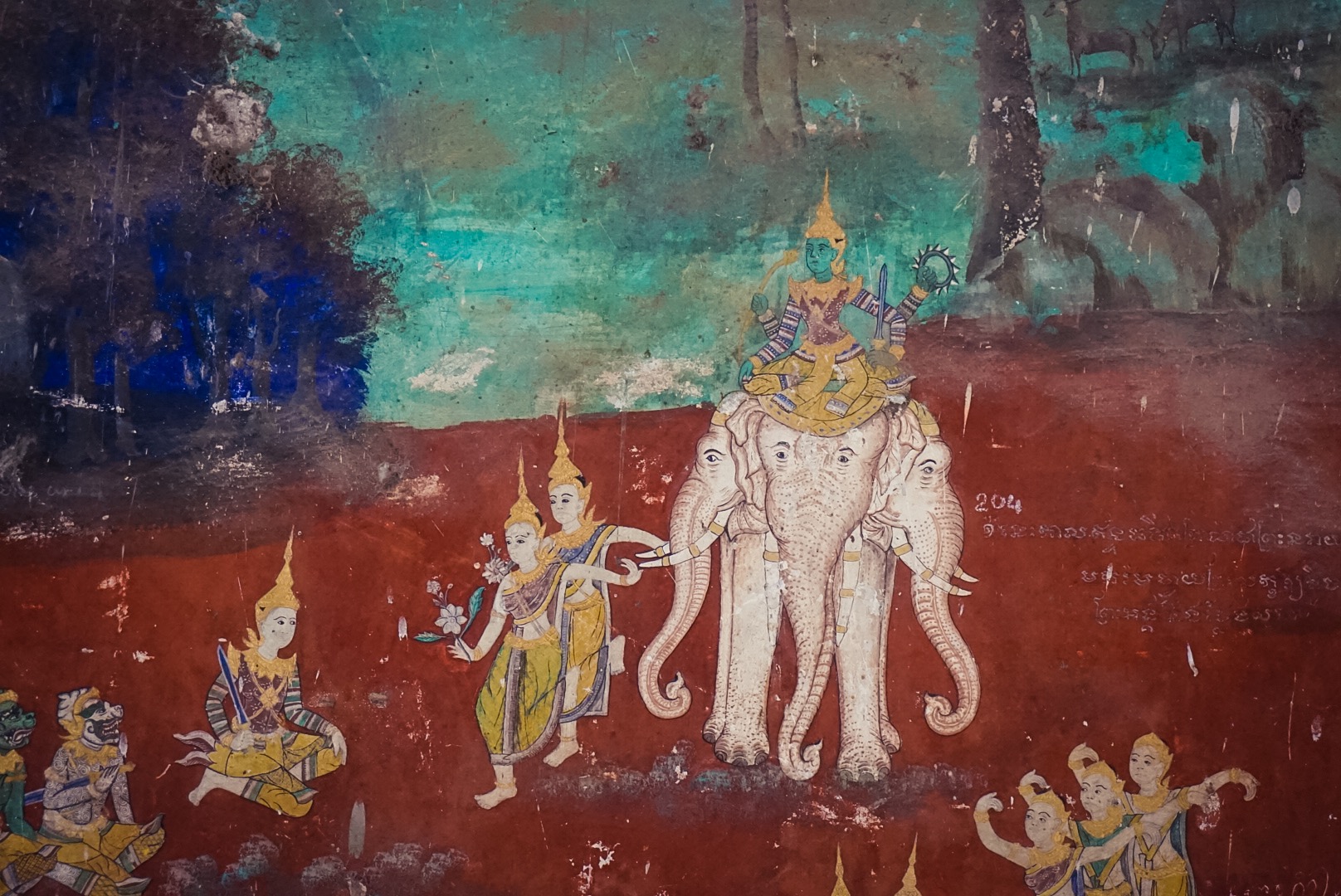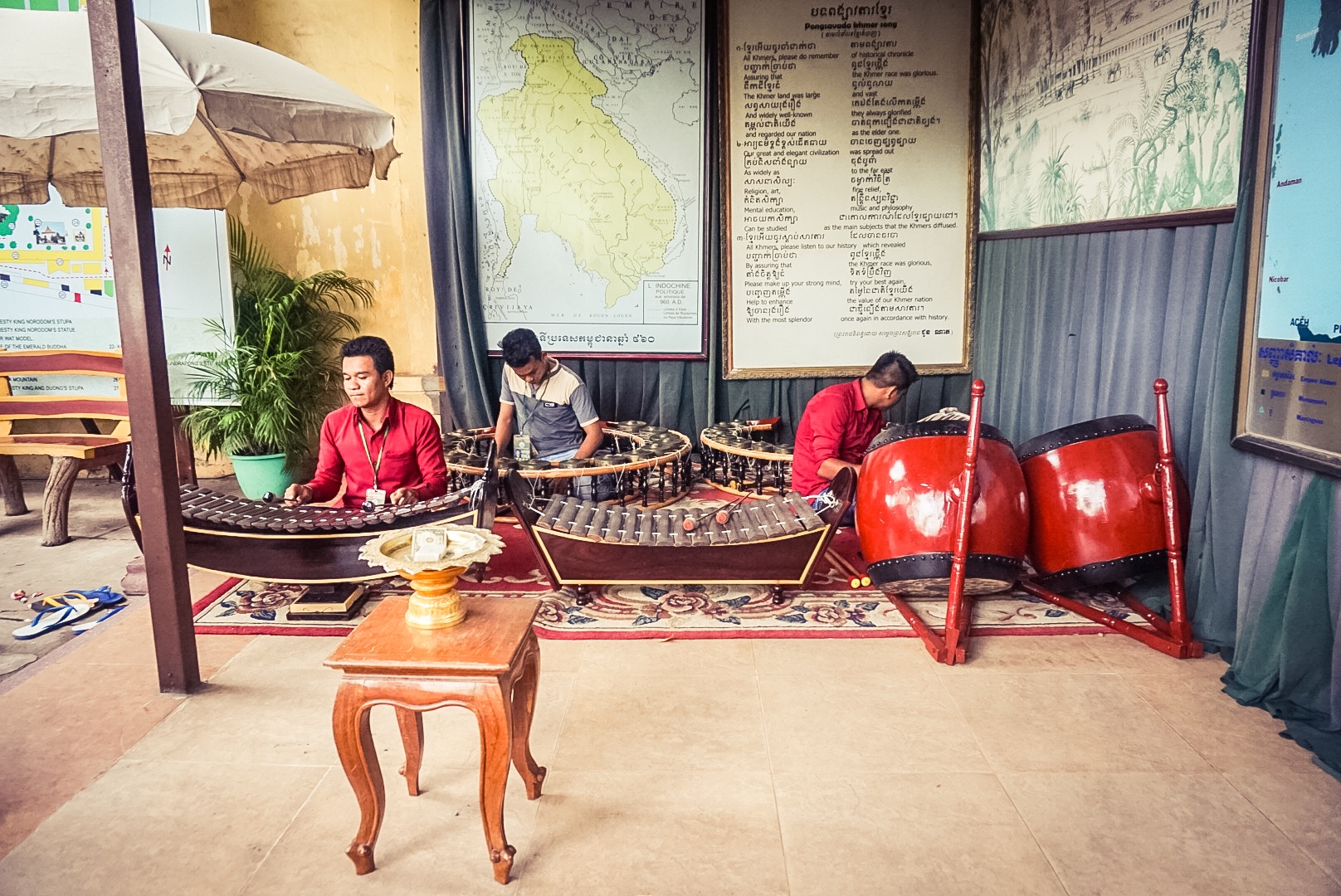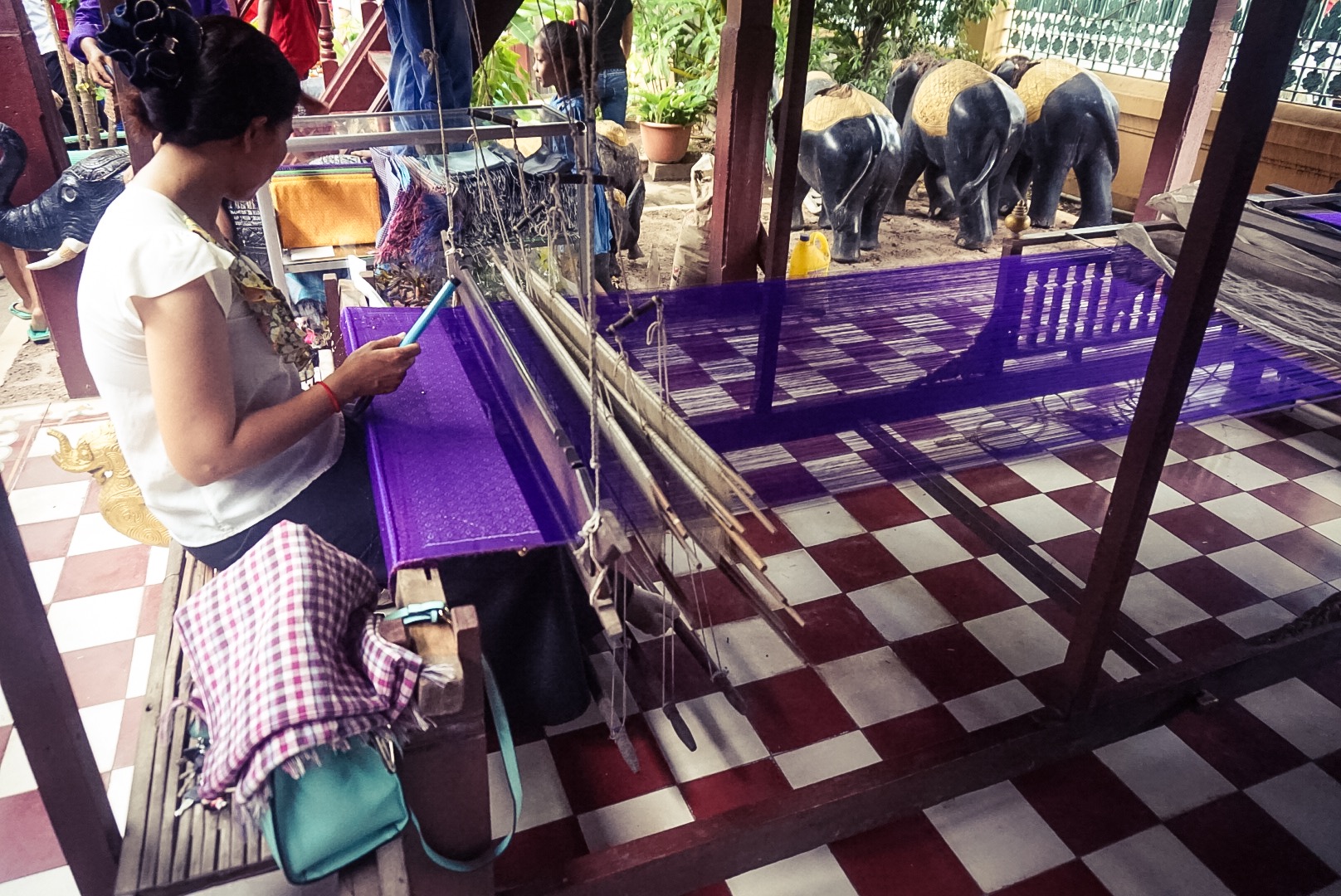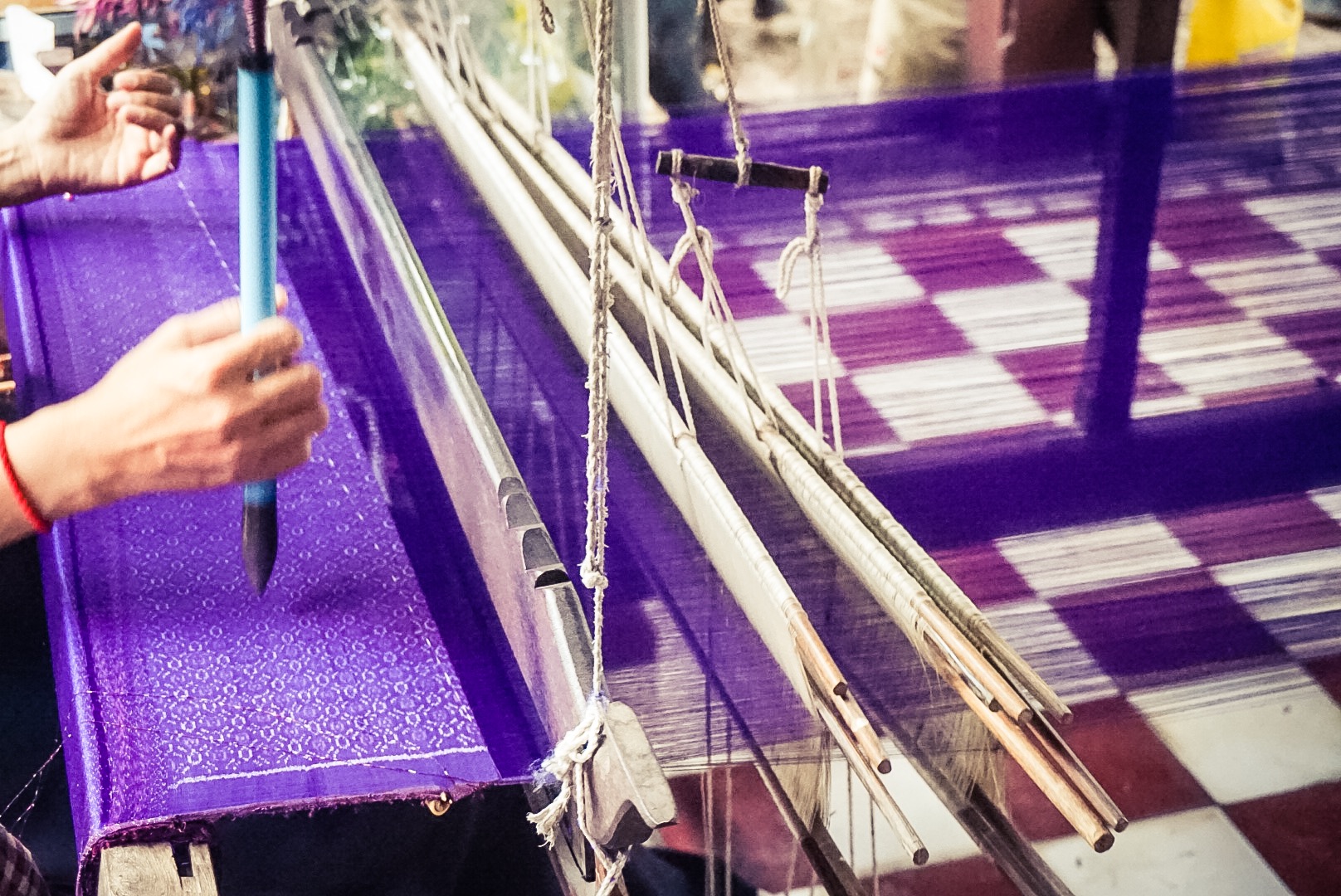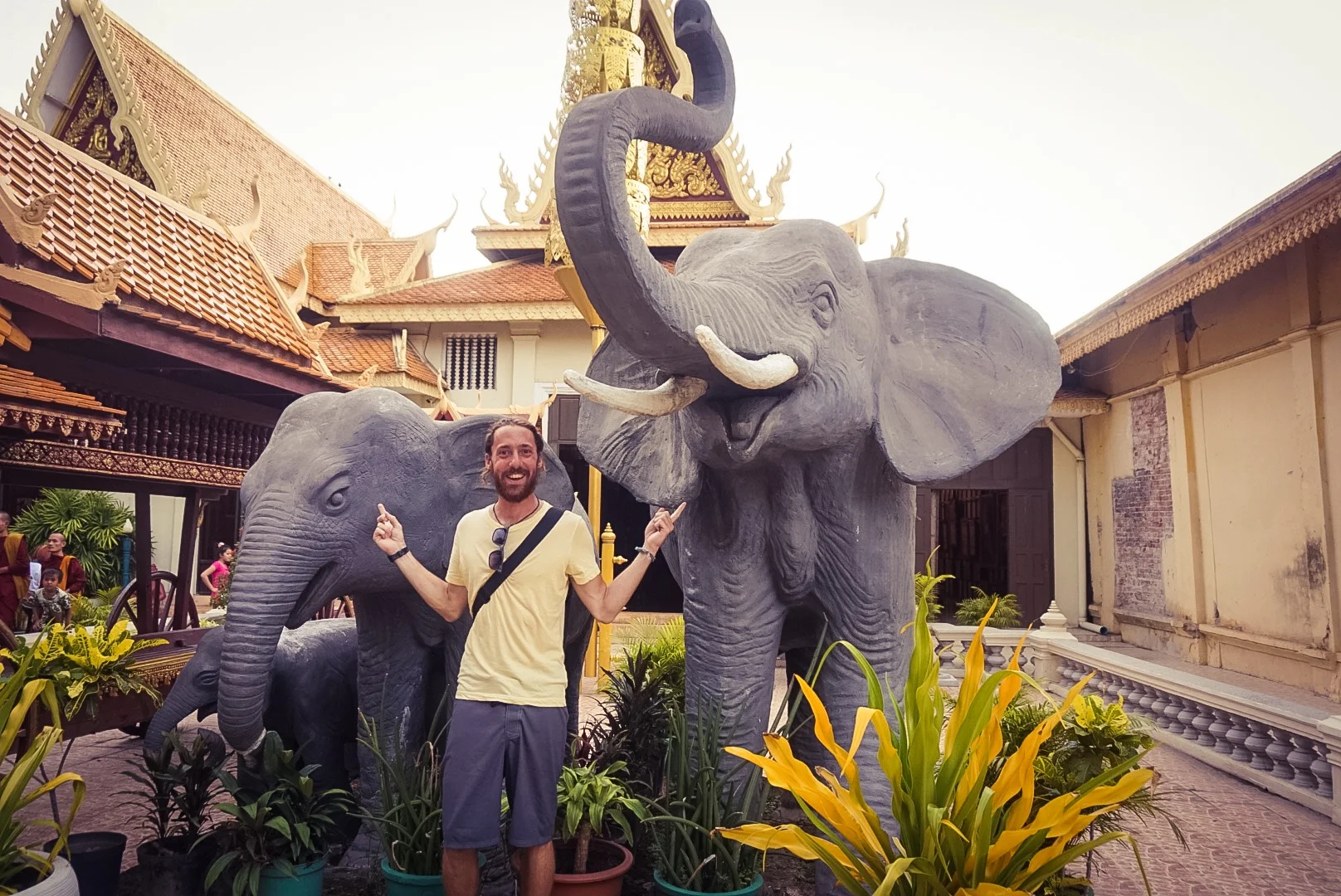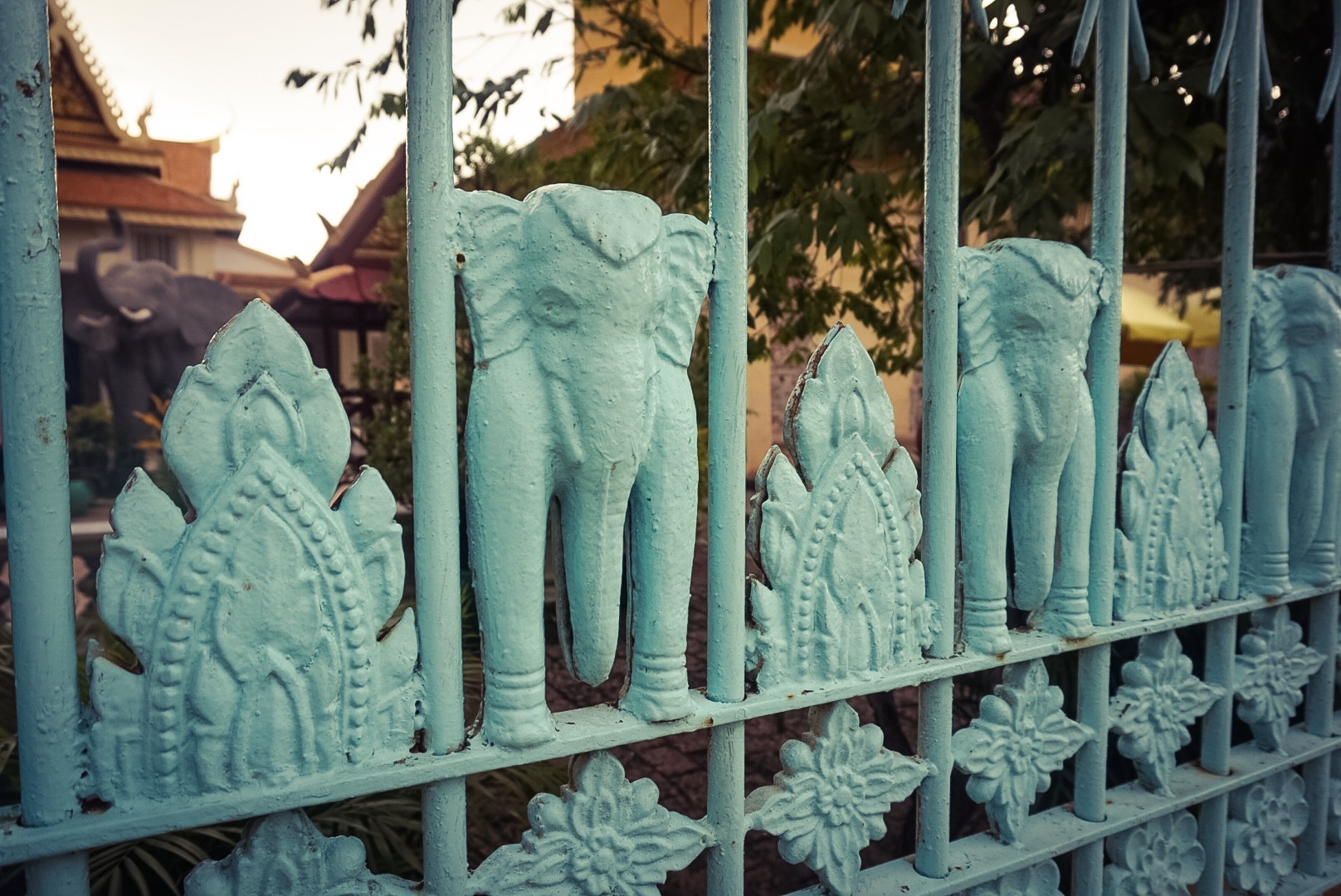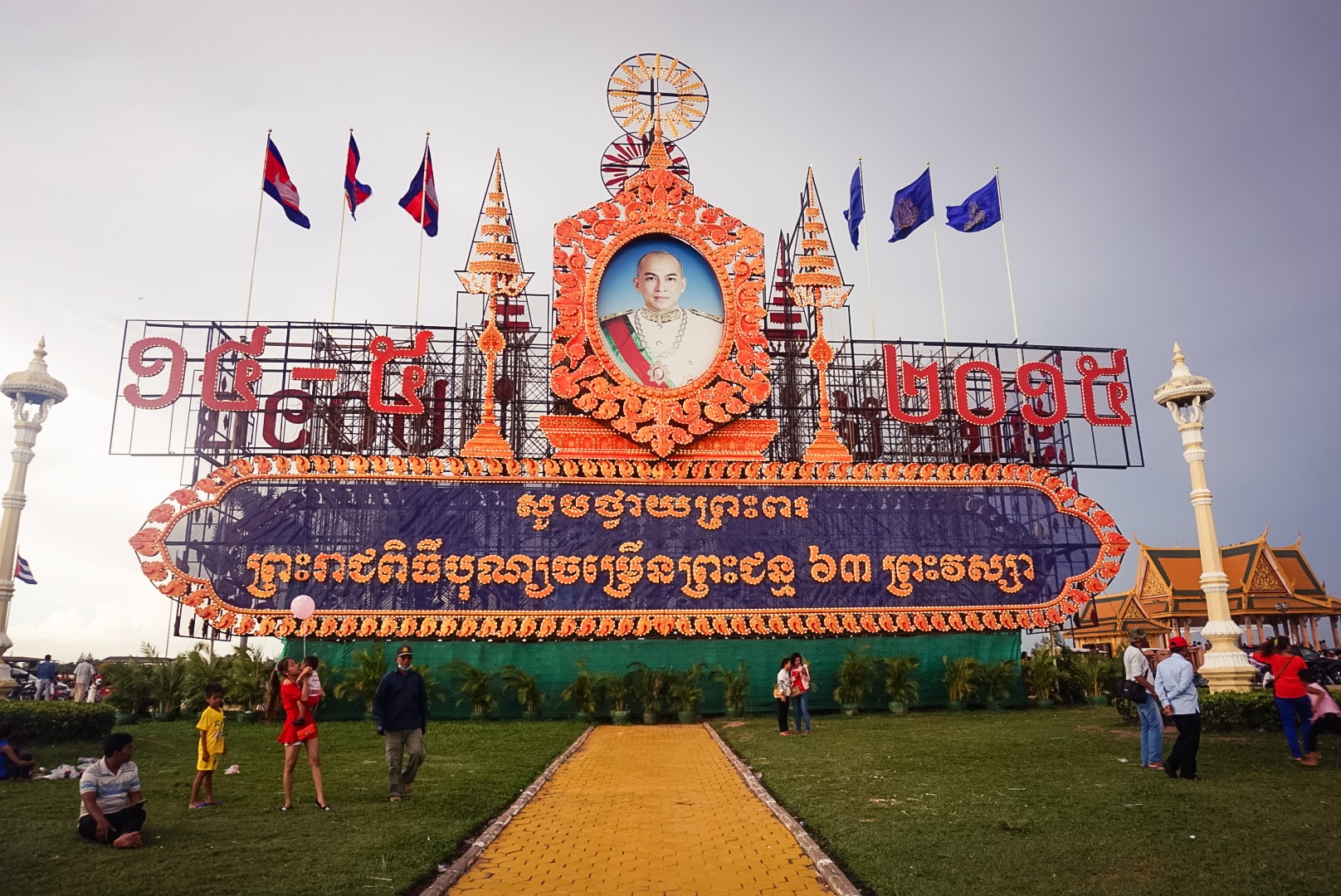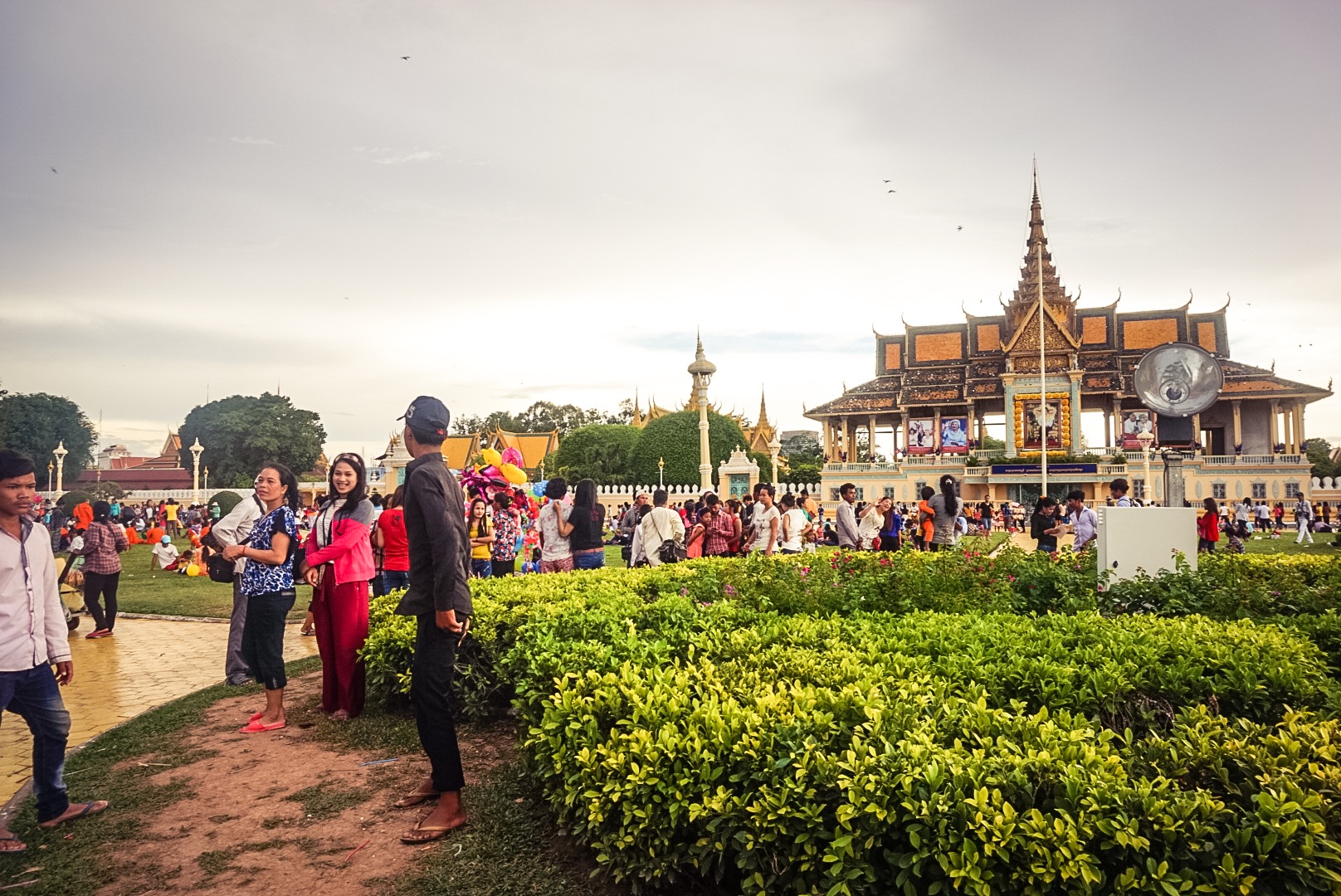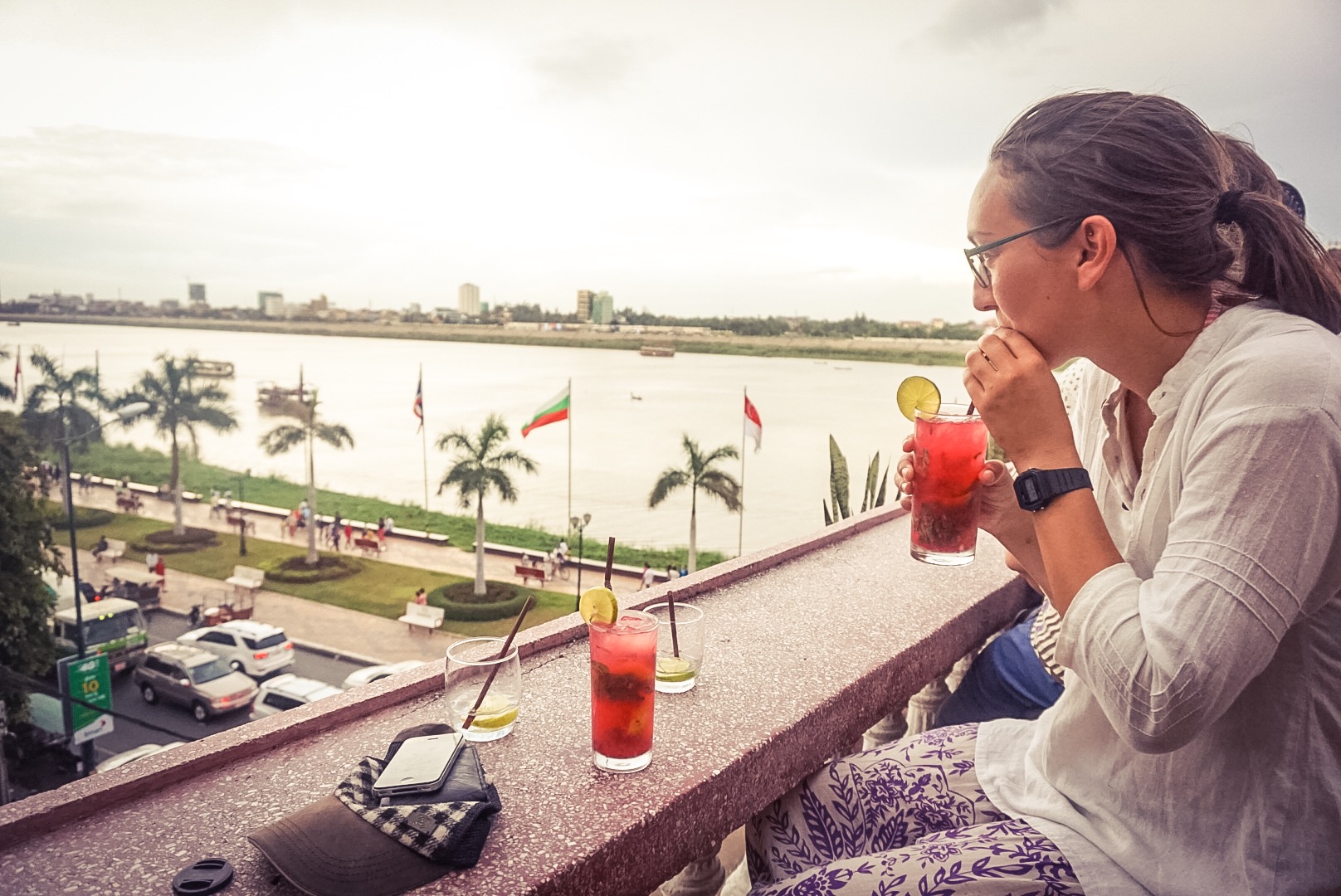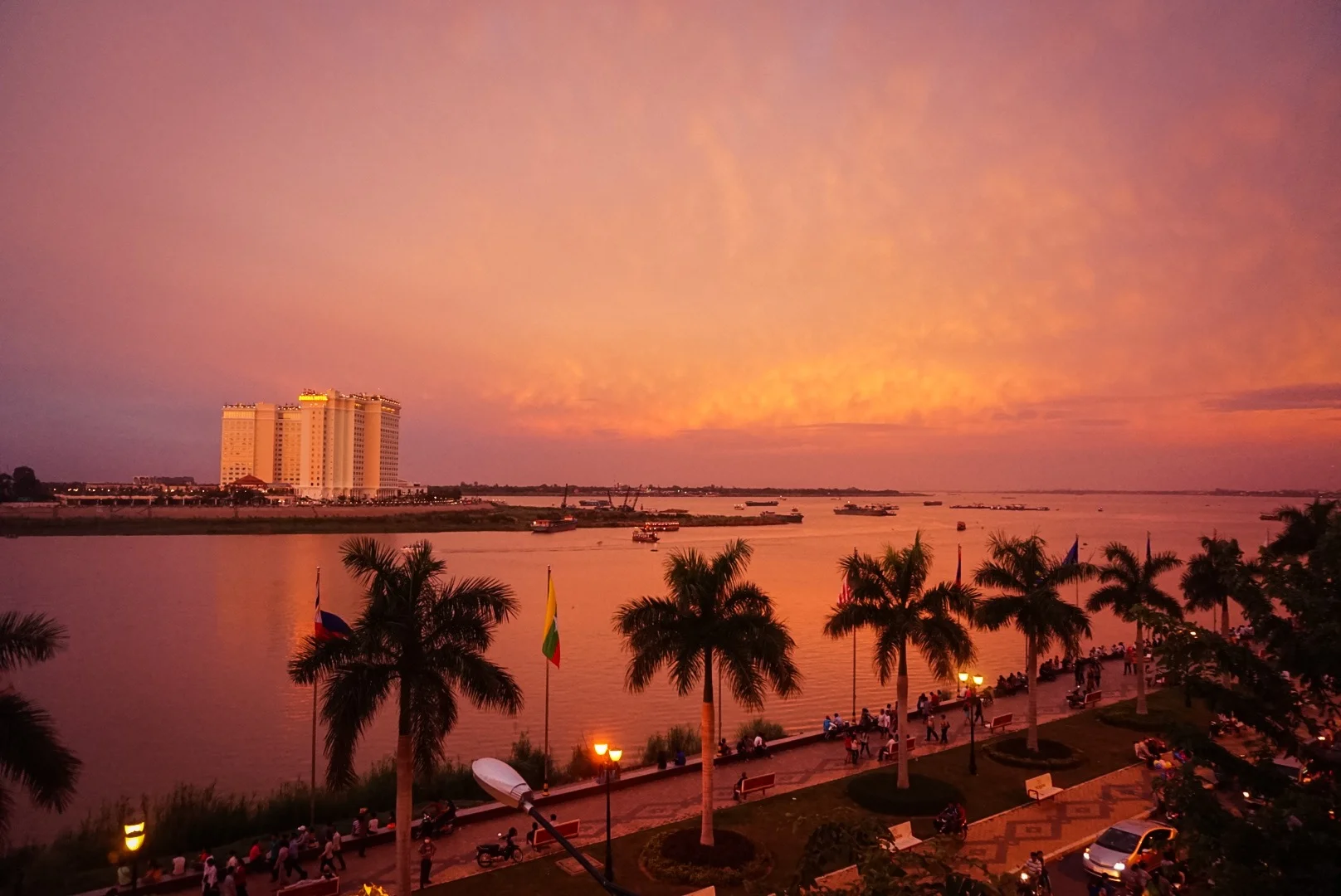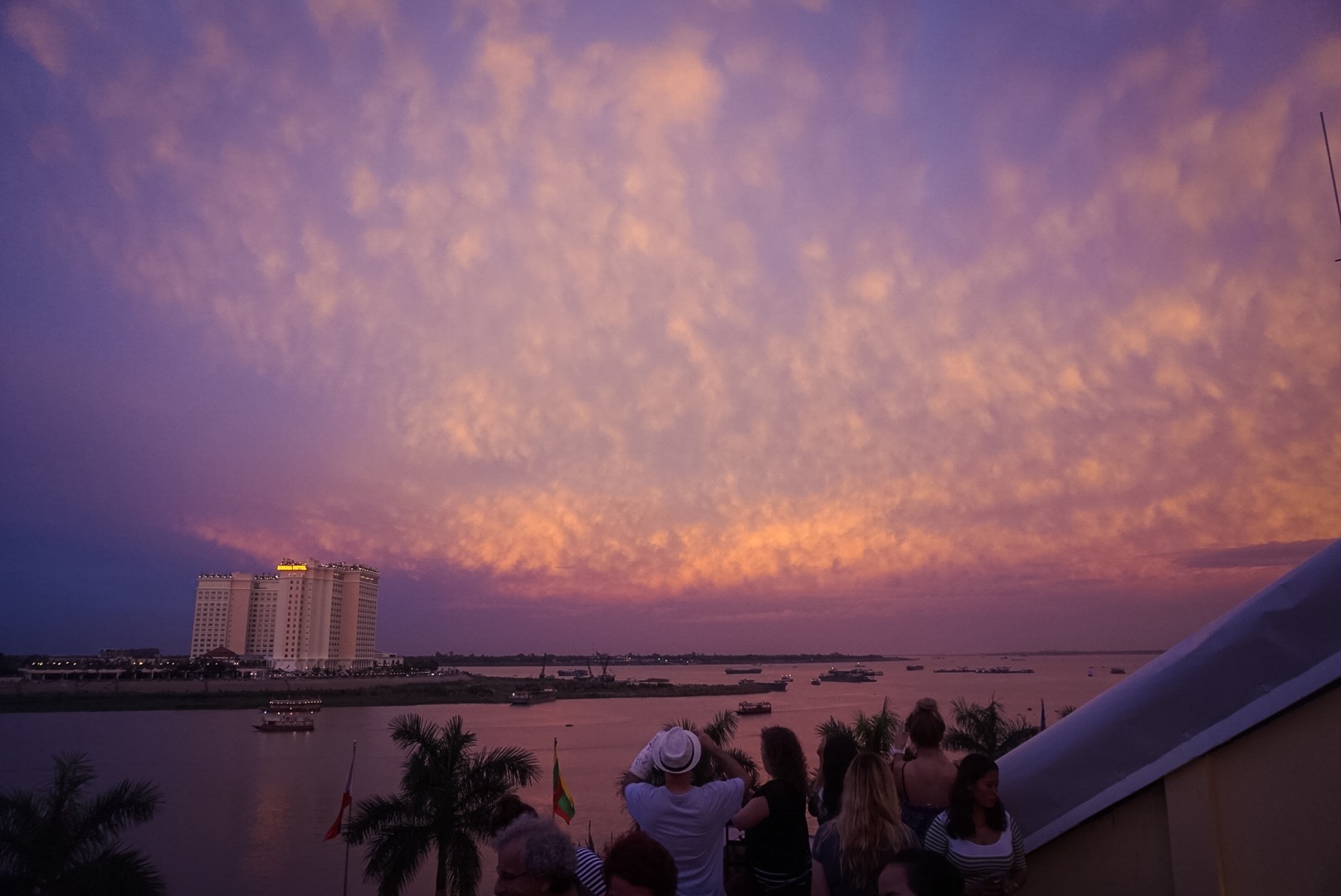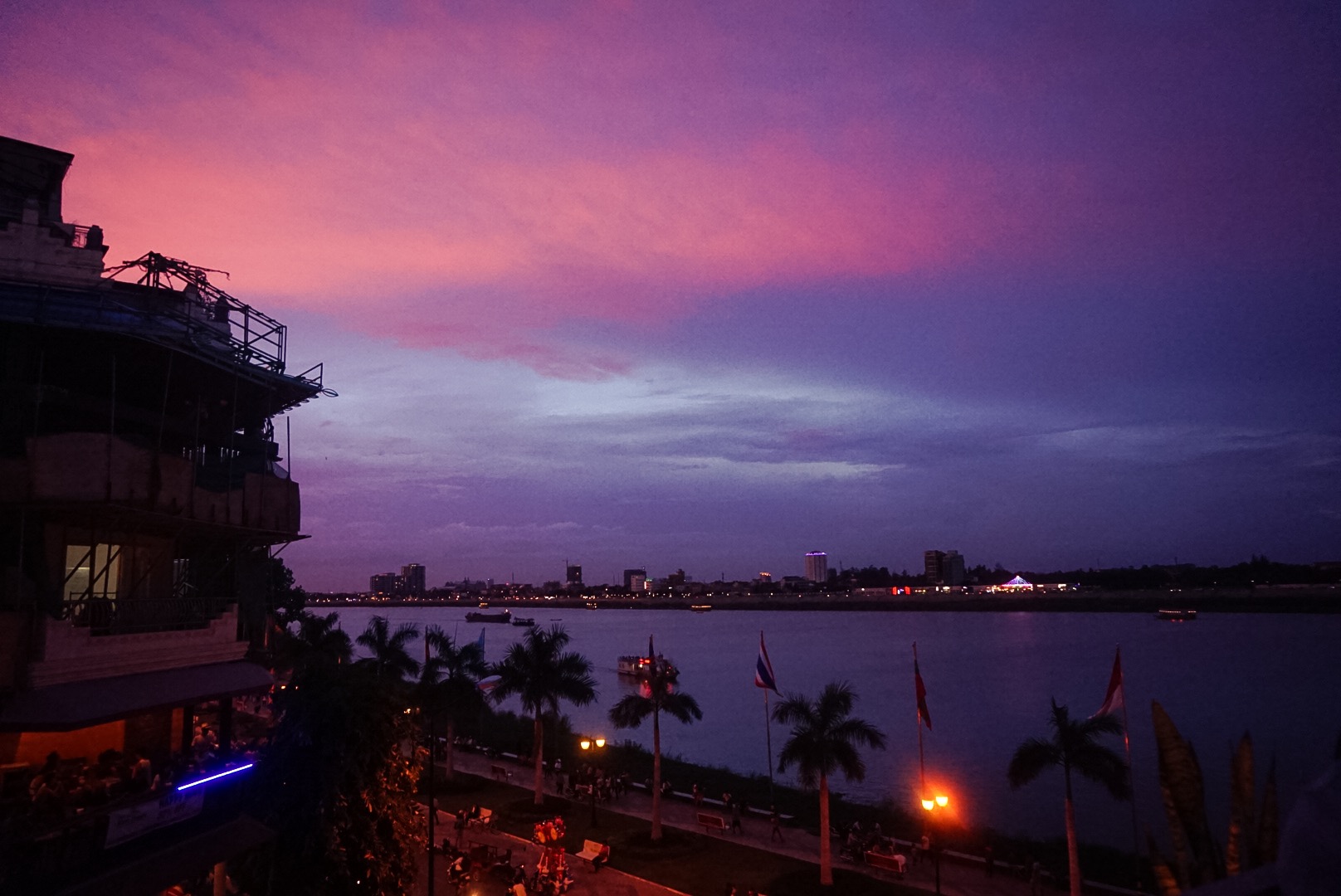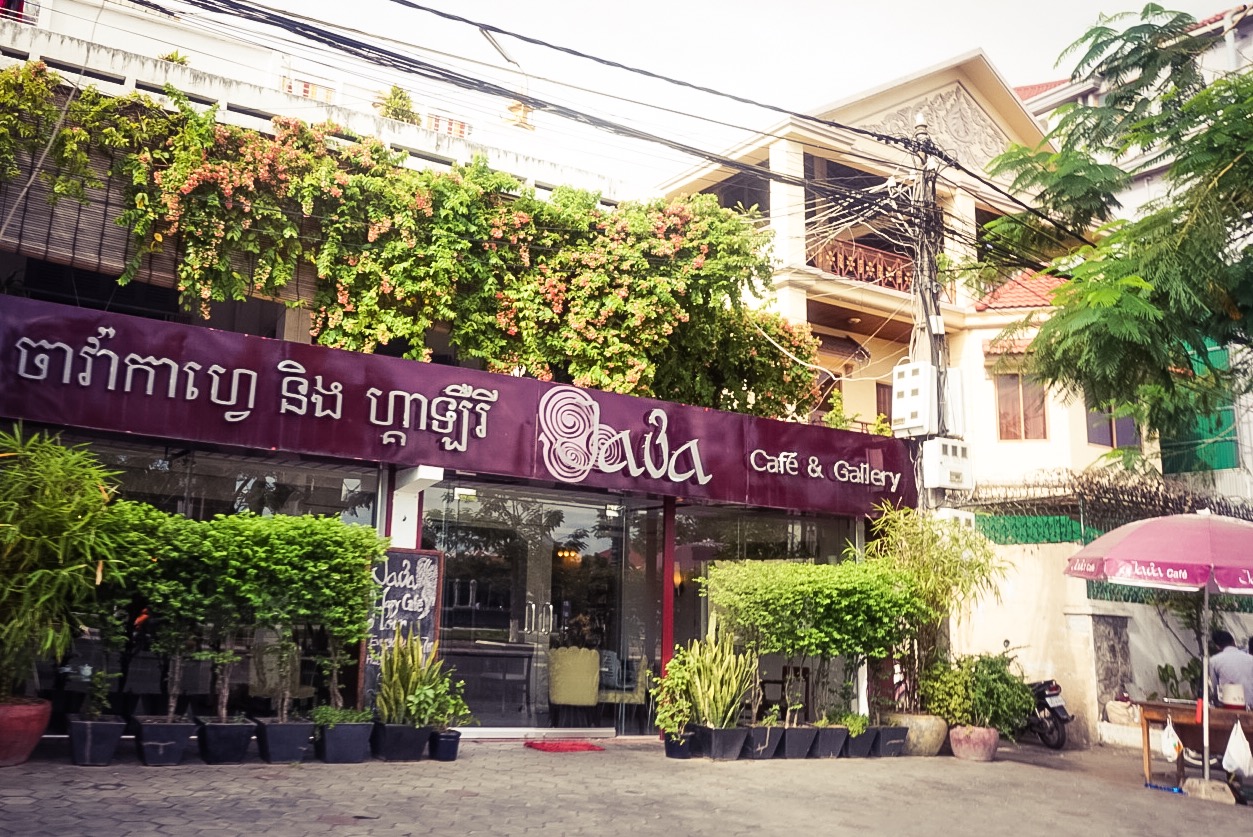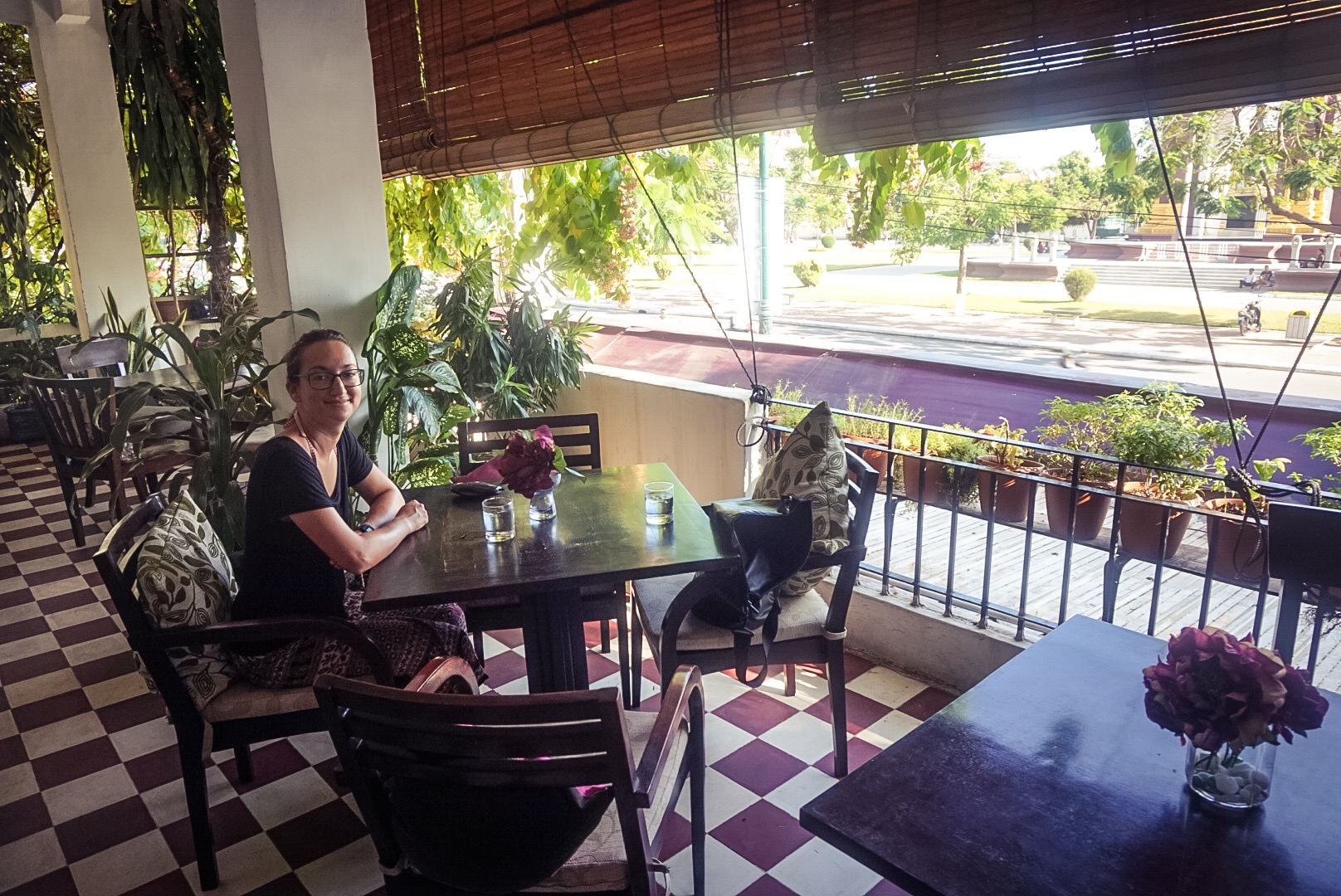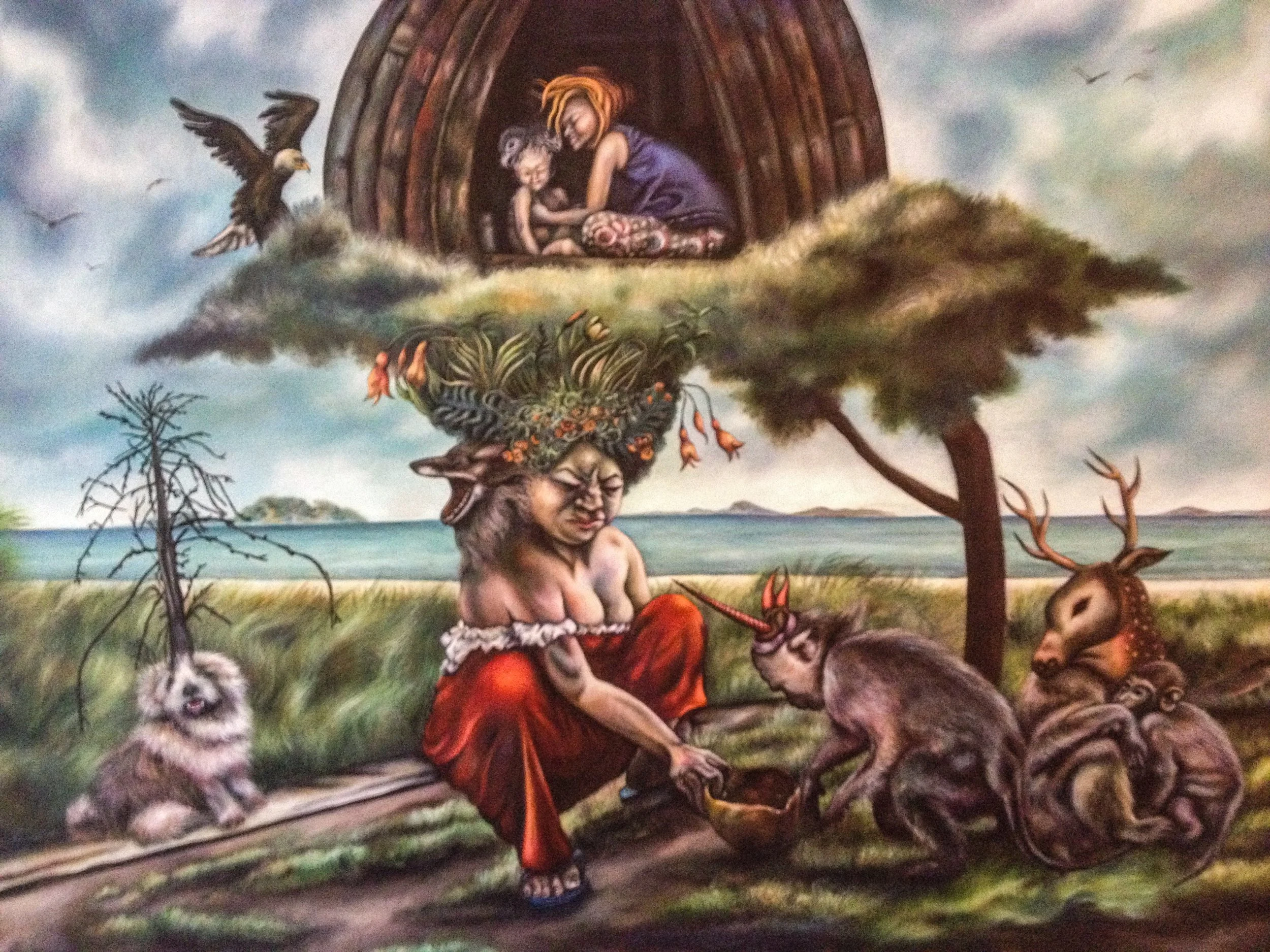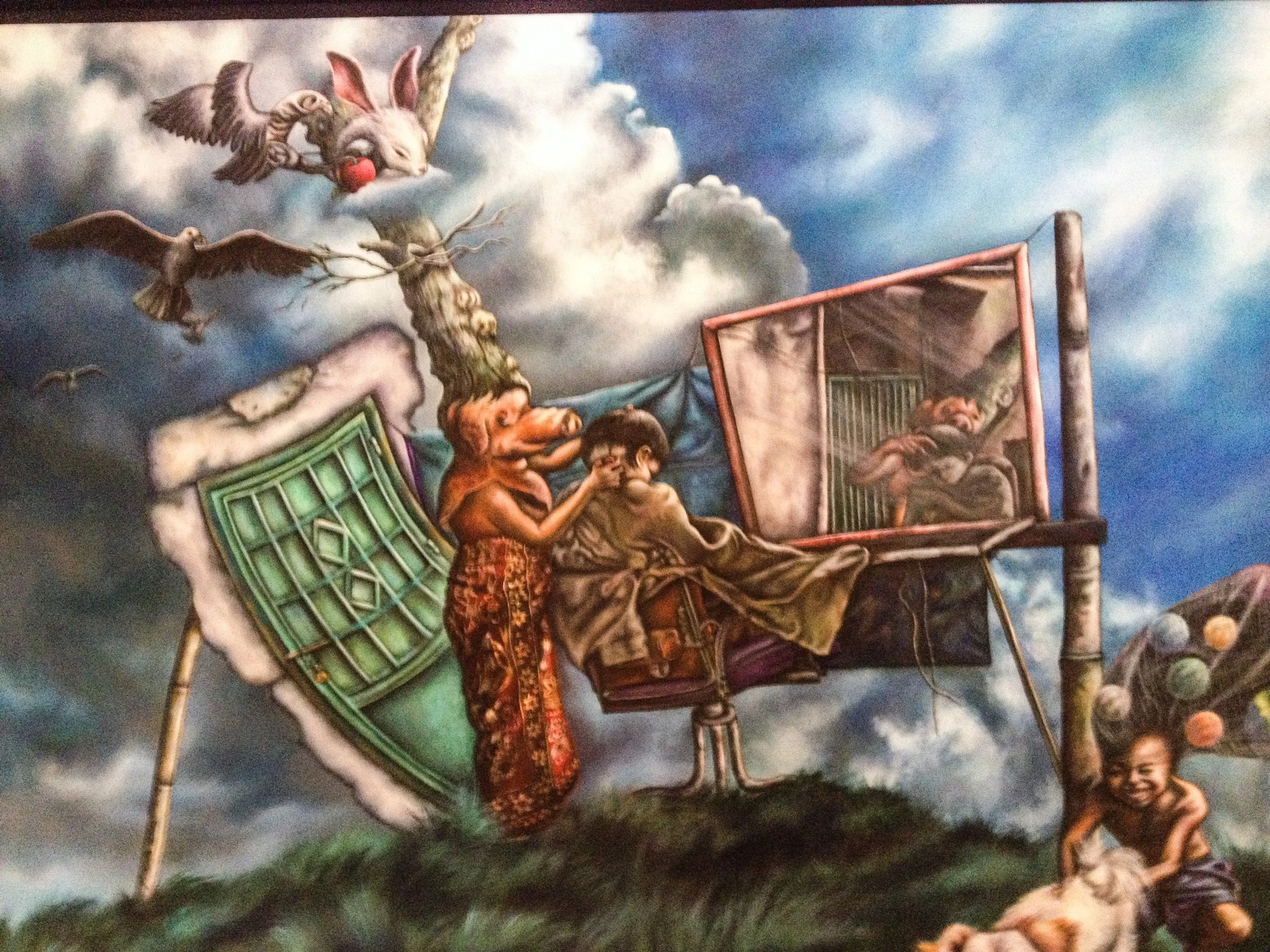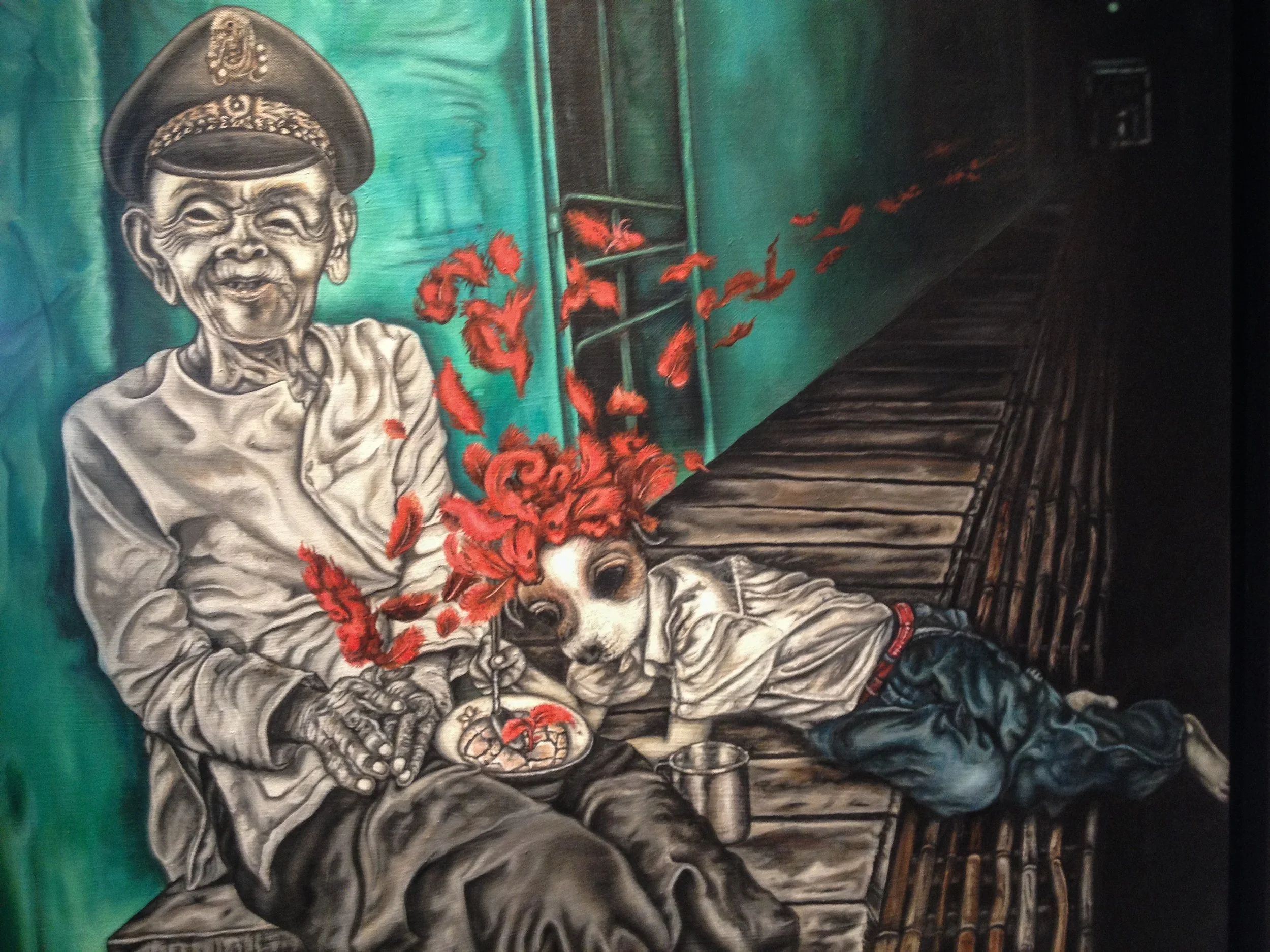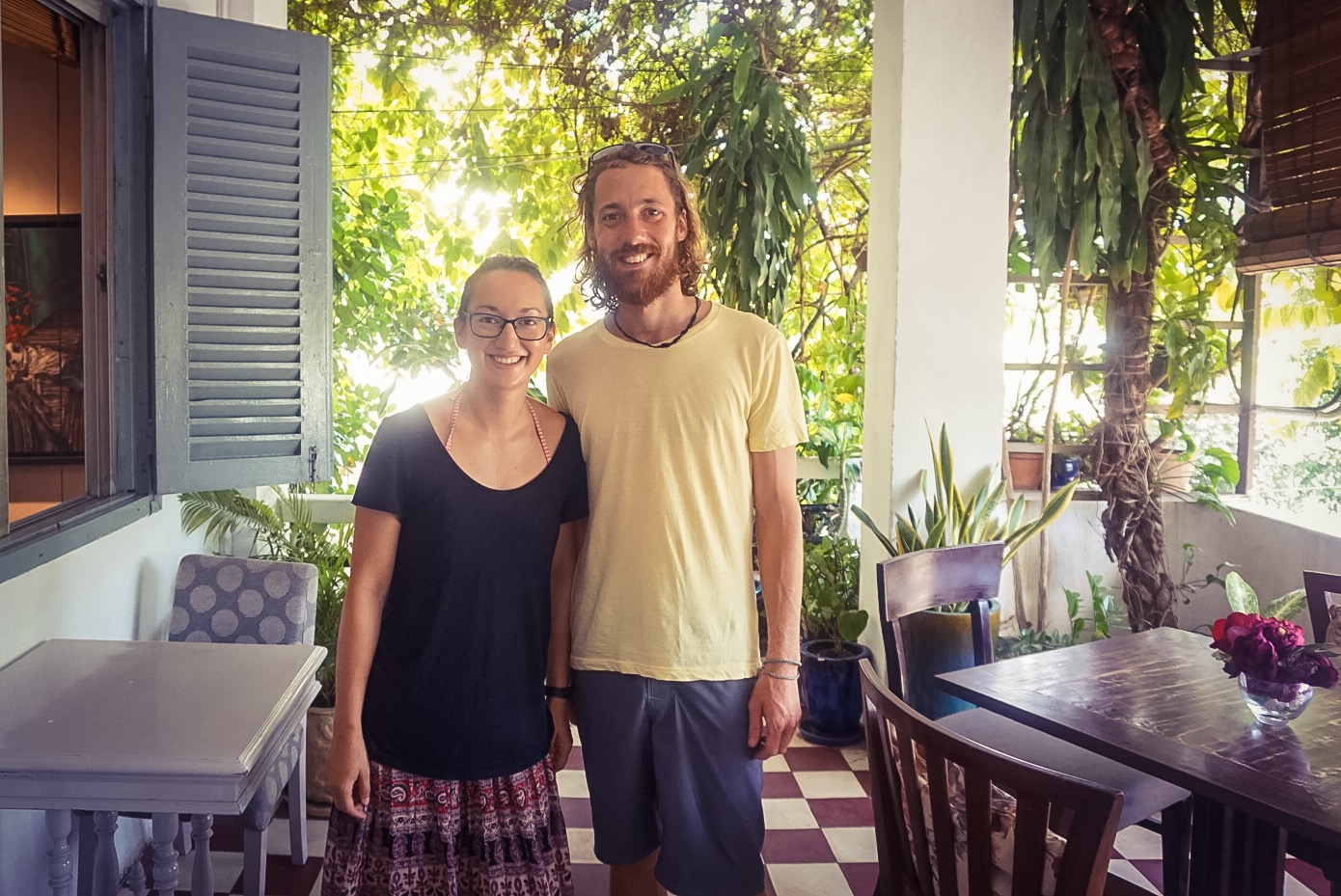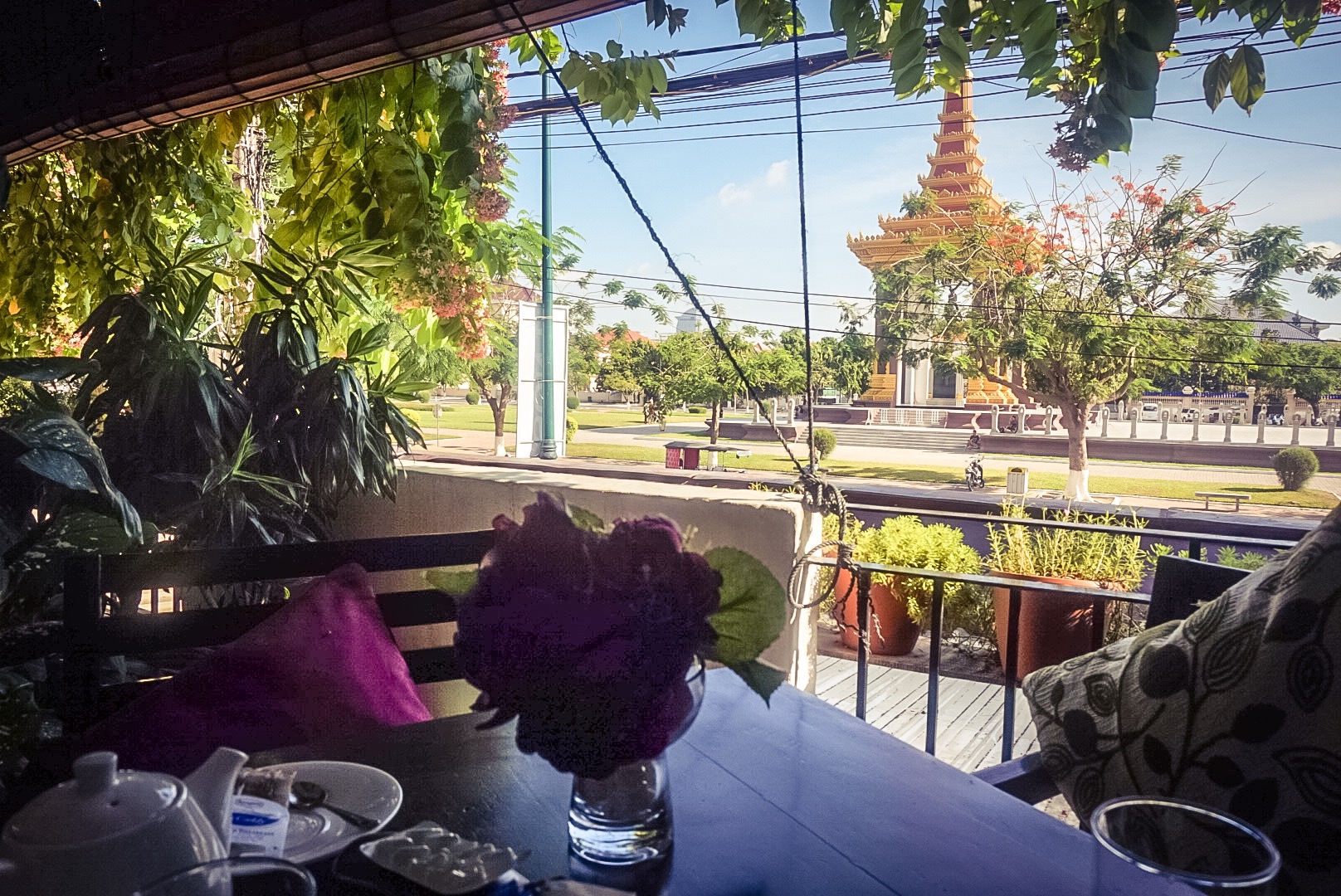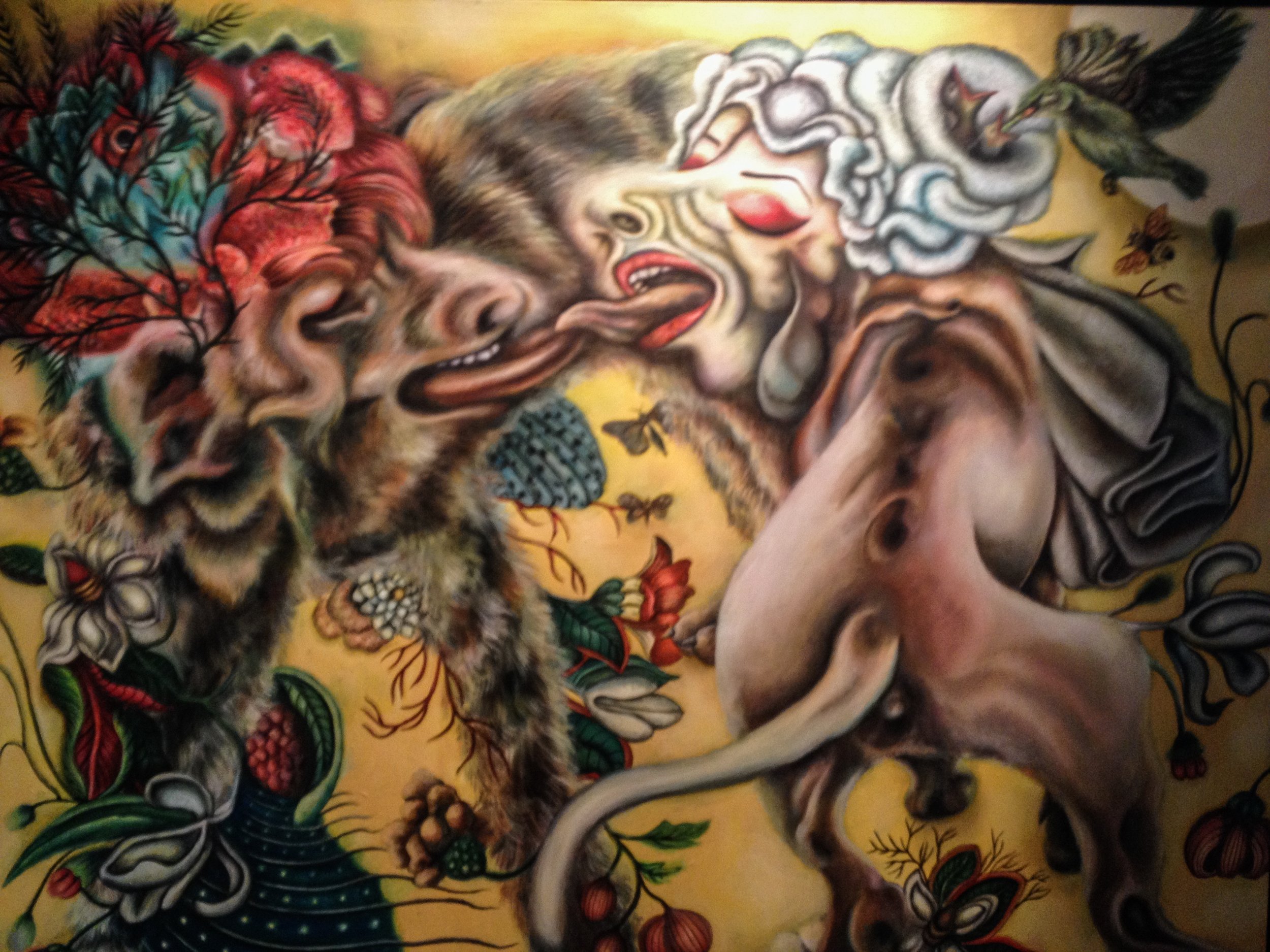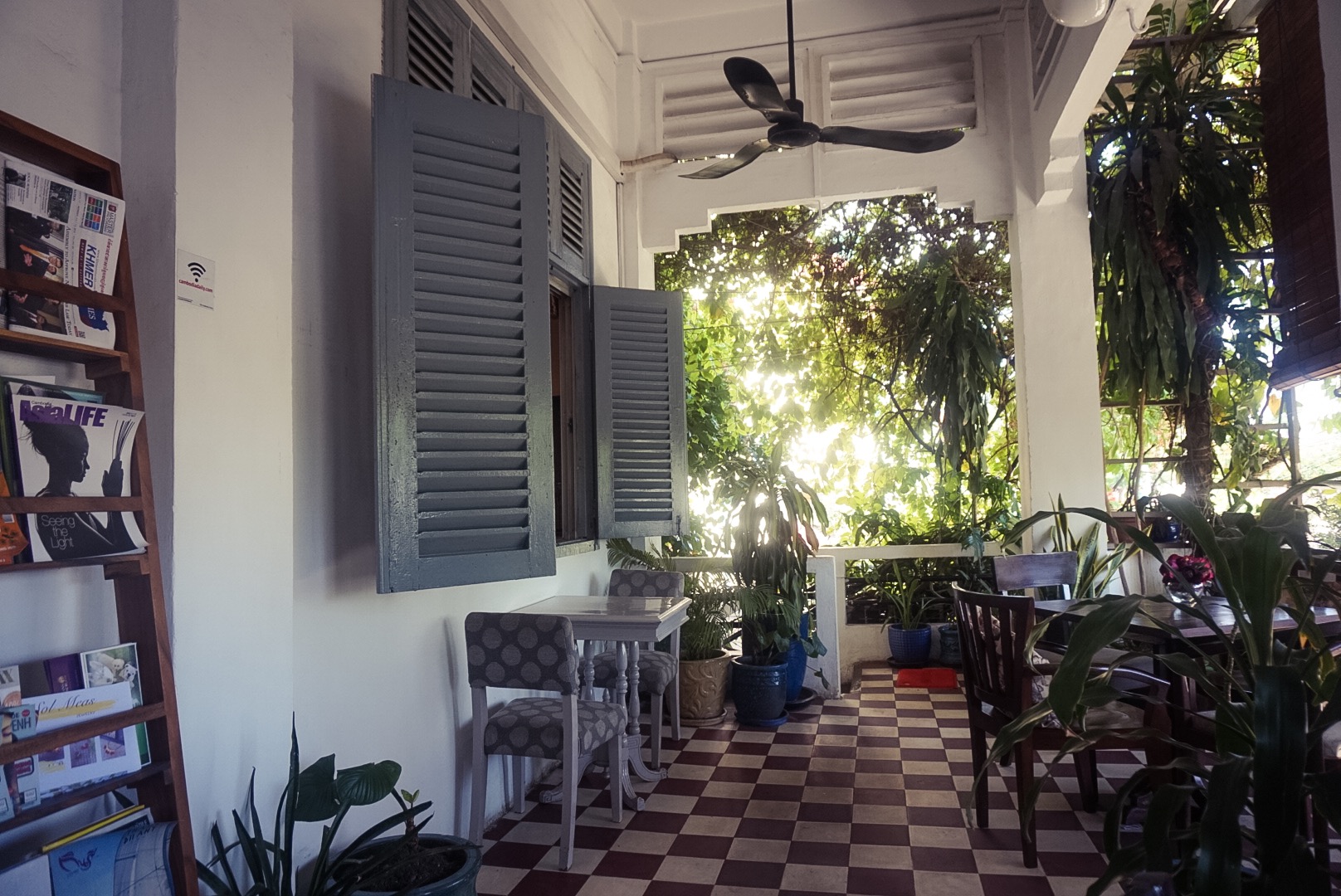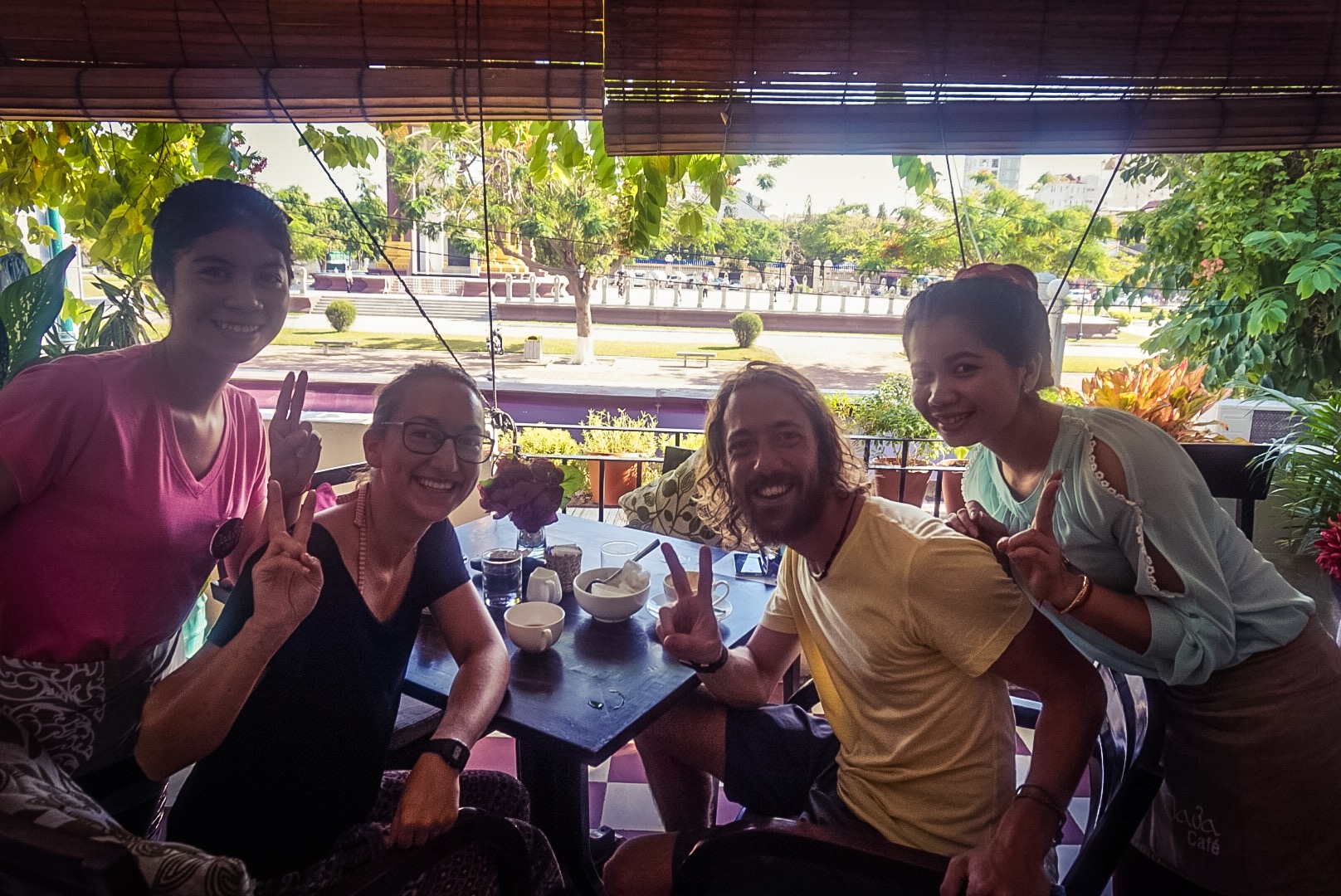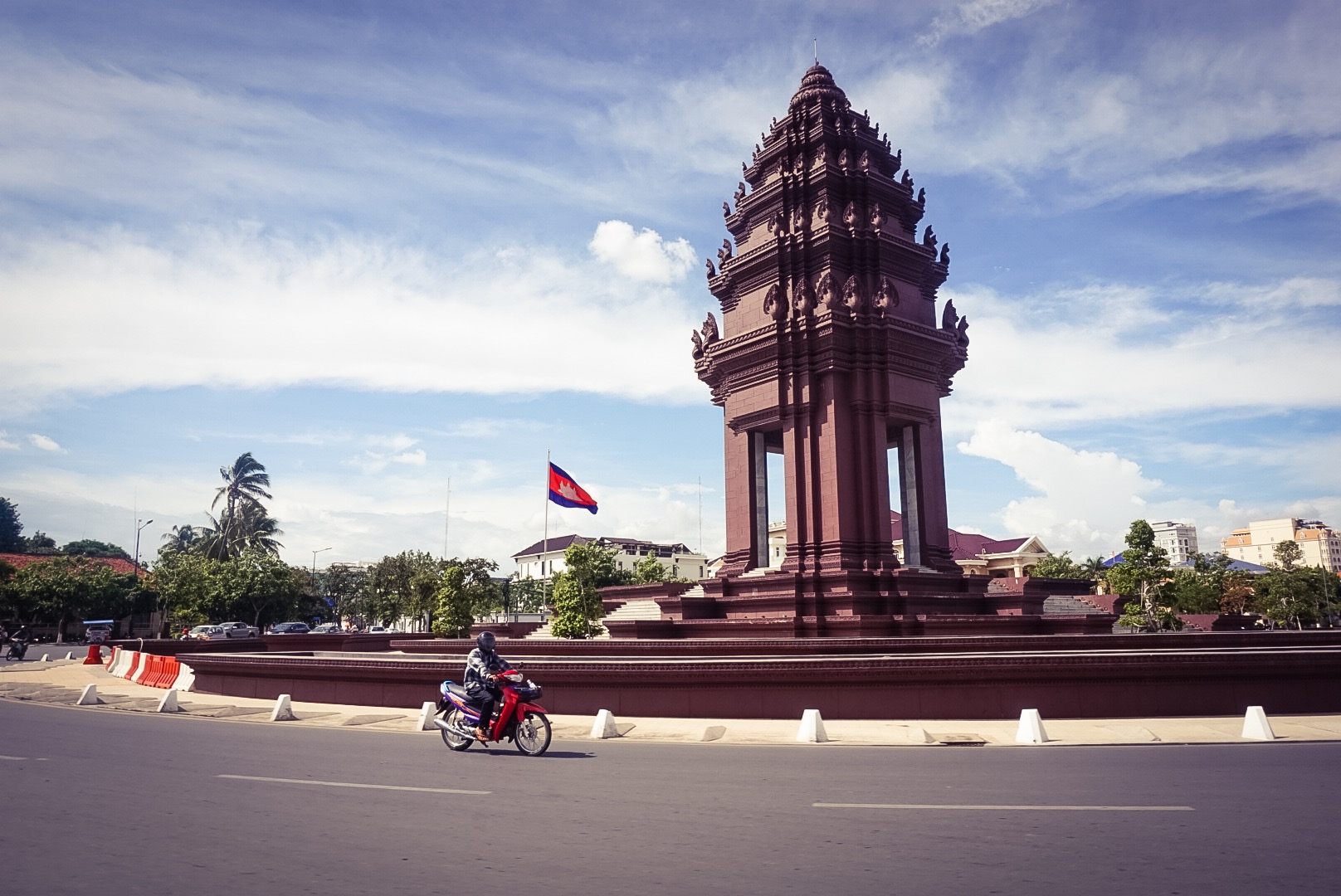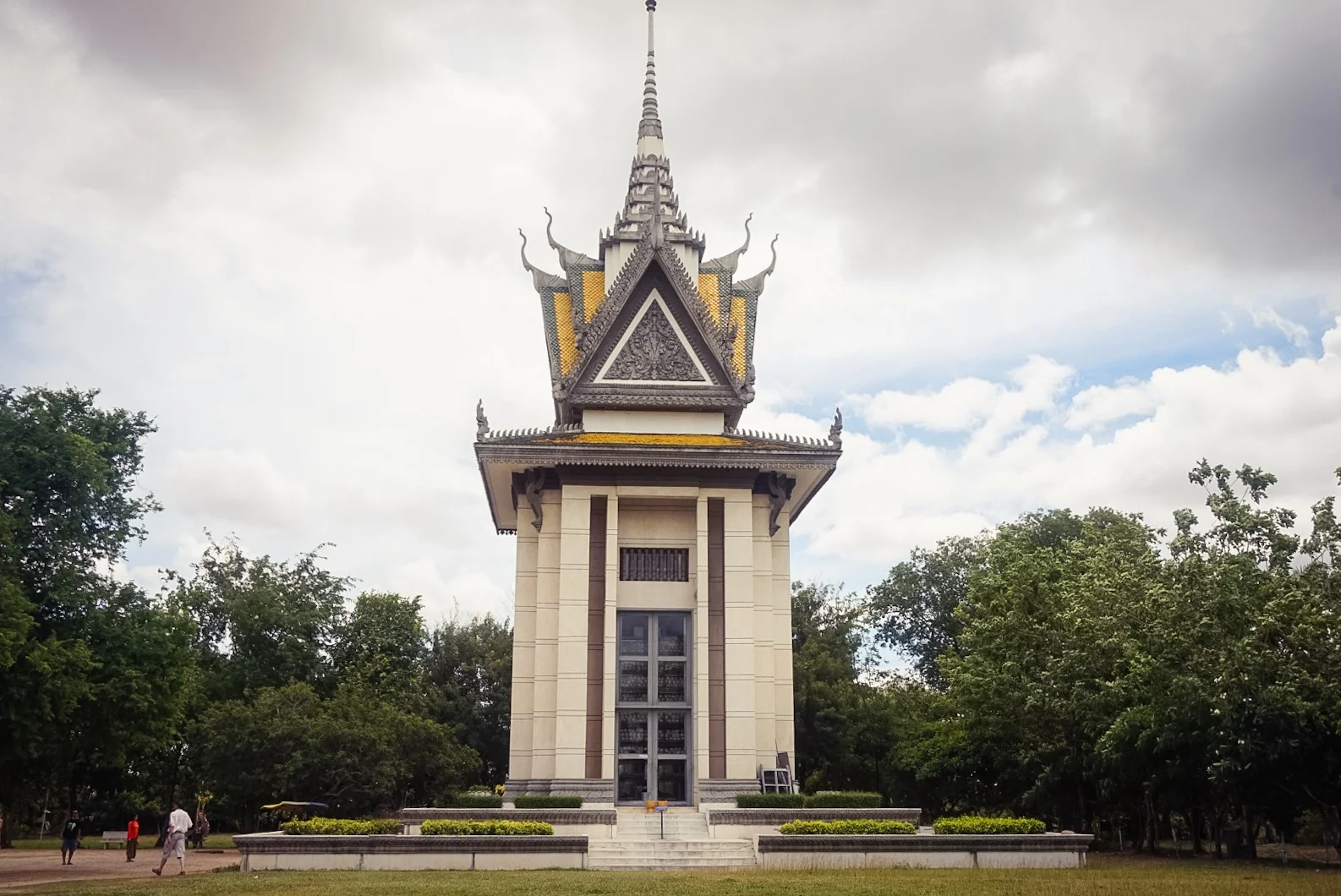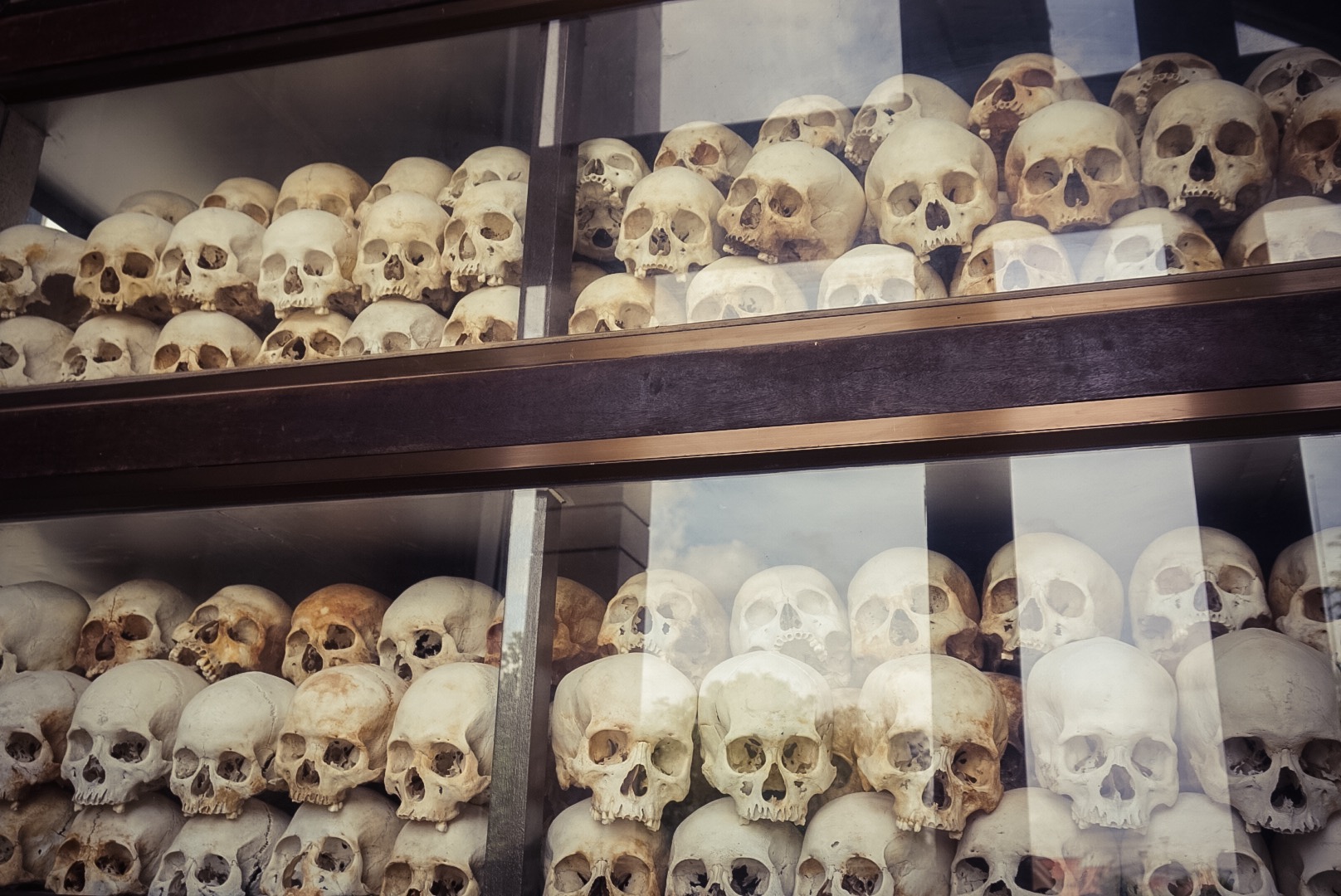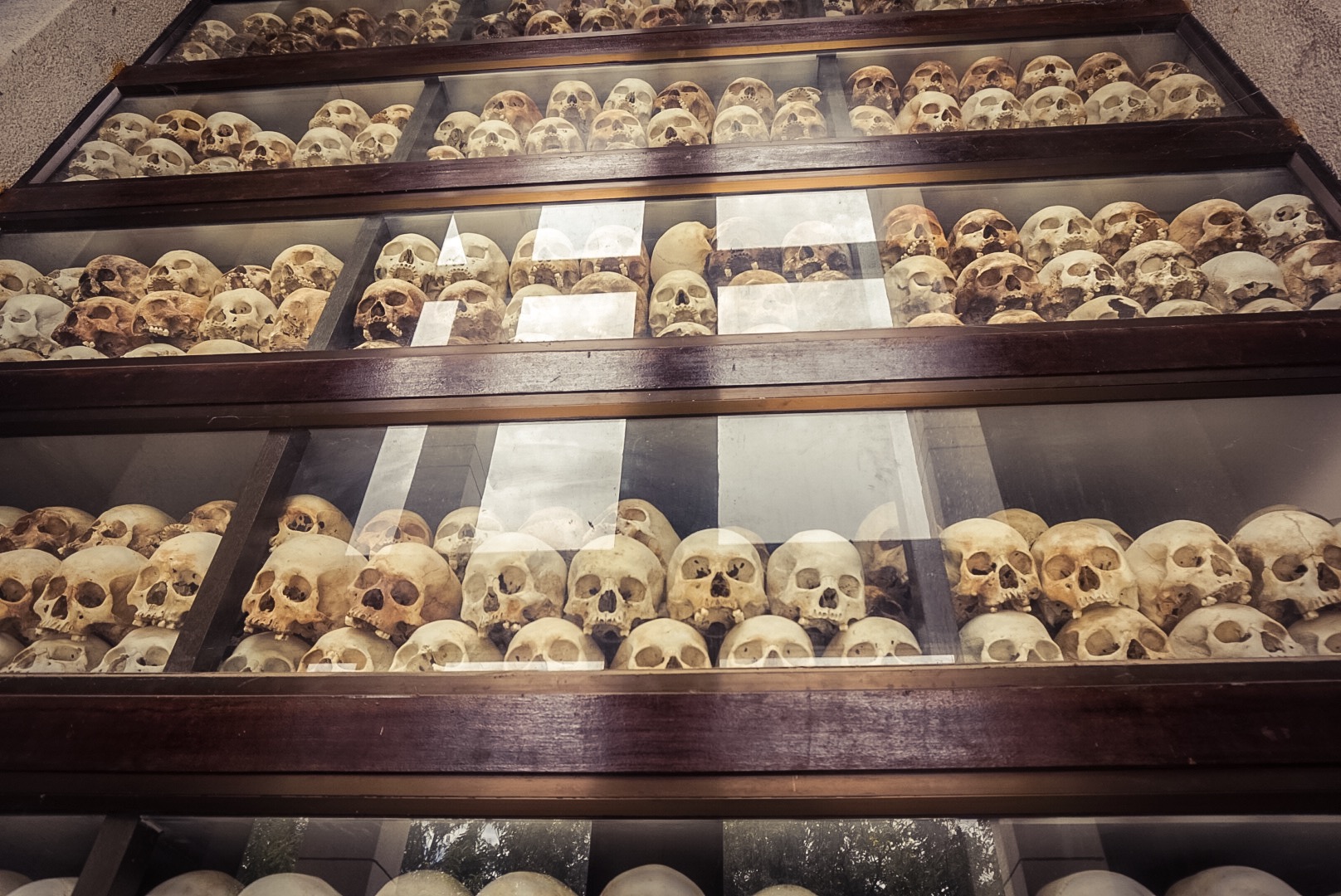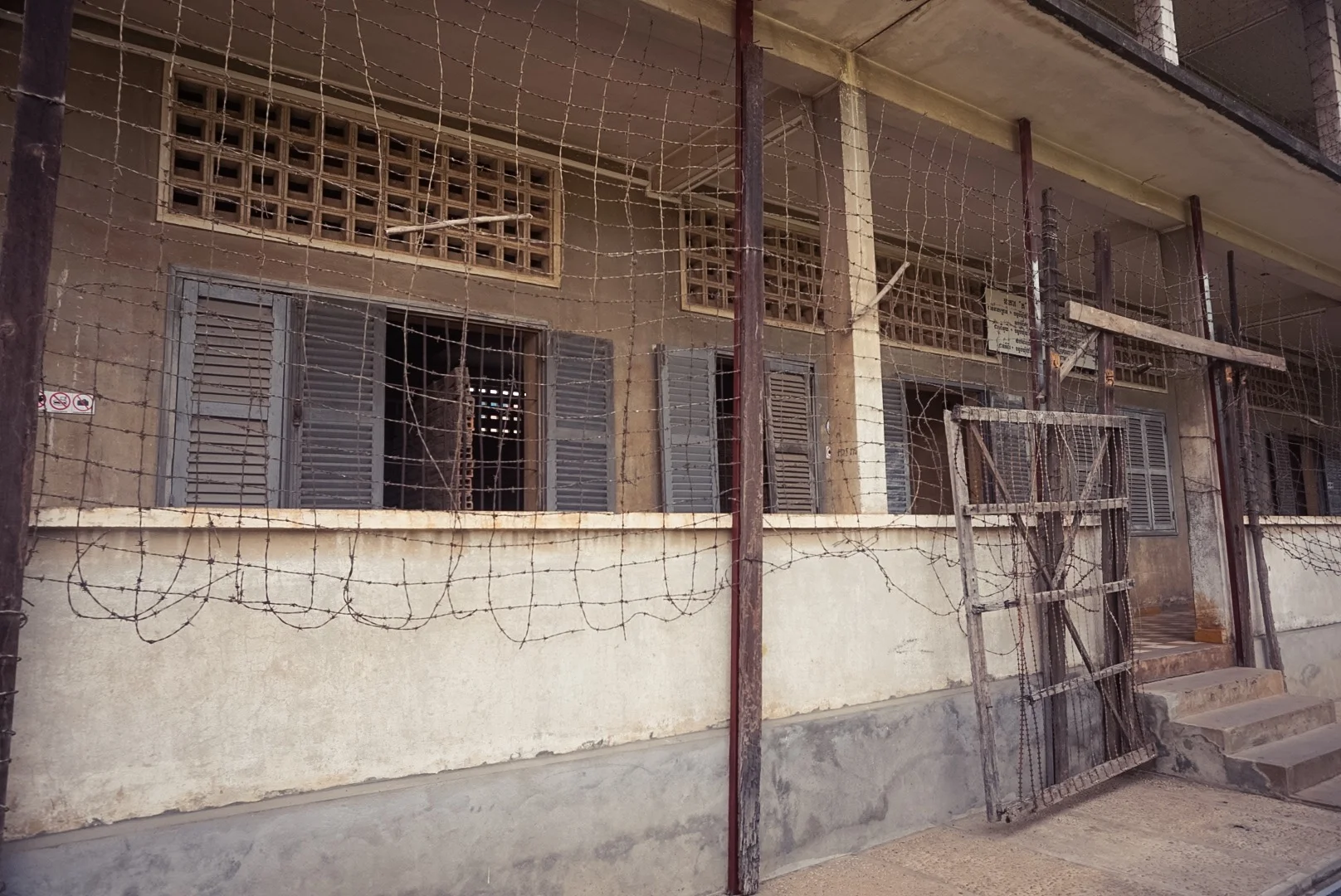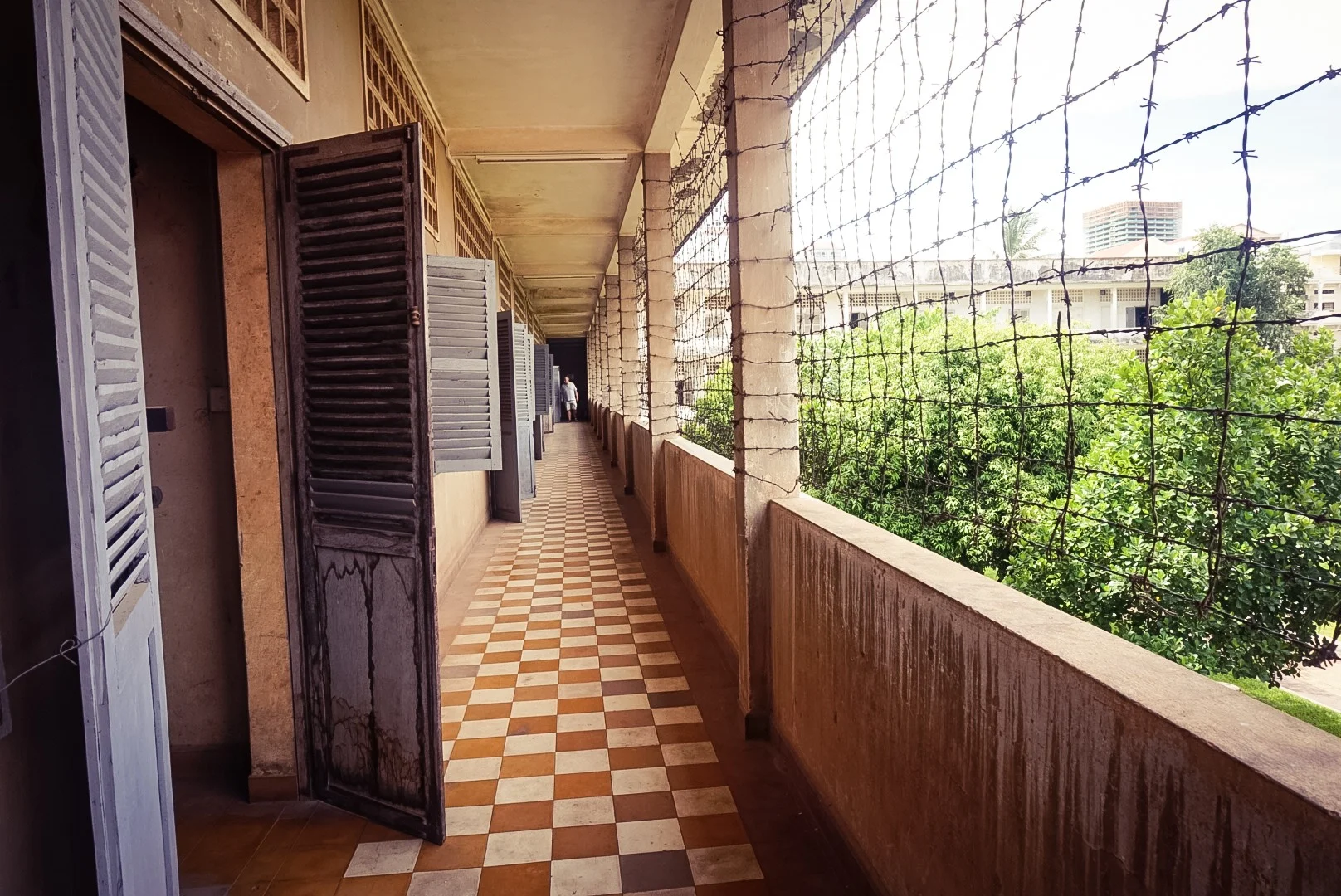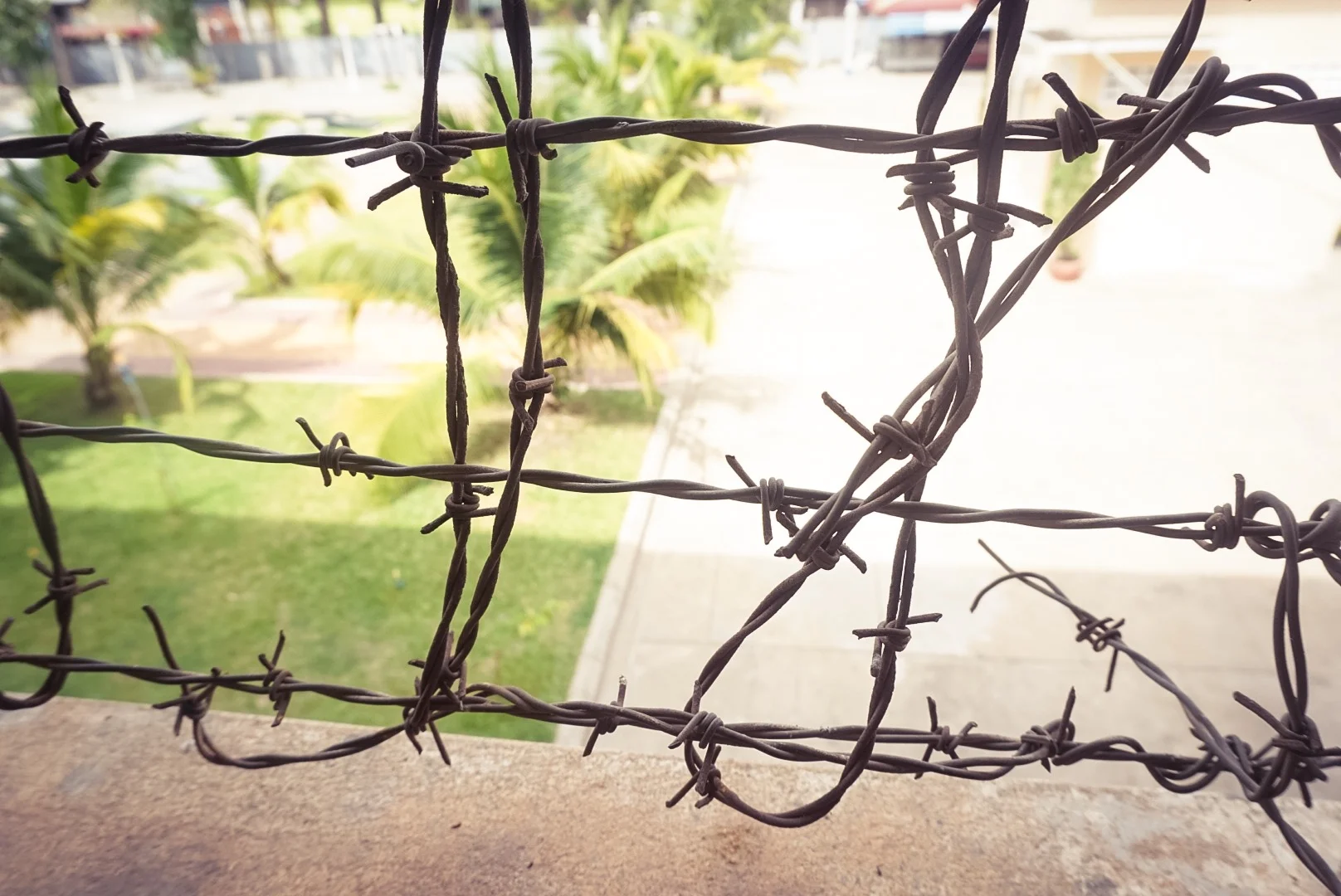PHNOM PENH

12th - 14th July 2015
We crept out of our guesthouse in Kampot at 6:30am in search of brekkie. A few local street stalls were open and we settled for pork noodle soup with a view of the old market. At seven on the dot a tuk tuk arrived to take us to our bus and by seven thirty we were on the open road. As we passed through the nearby seaside town of Kep, Helen turned and said we couldn't possibly be in Kep yet just as a massive 20 foot high crab sculpture passed the window saying welcome to Kep. Smirks filled the bus. The flat rural countryside gave way to little warehouses and workshops as we were swallowed by Phnom Penh's outskirts. We arrived into the dusty capital round 12 and checked into Same Same hostel. The bar / cafe area was really nice and the ensuite rooms though basic were fine, especially at $8 per night.
On our last night in Kampot we met a girl who lives in Phnom Penh. She gave us a heads up on some good places to eat and drink, so after dropping off our bags in the room, we went in search of street 240 for "The Shop Bakery". It was a lovely little place just behind the Royal Palace however the prices were as western as the clientele. We were in the mood for some home comforts and tucked in to some posh sandwiches and cake. It did taste bloody good and they serve a great iced coffee.
Just round the corner was the Royal Palace where King Norodom Sihamoni still lives today. Before ascending the throne in 2004, Sihamoni was best known for his work as a cultural ambassador in Europe and as a classical dance instructor. The Royal Palace consists of two main areas, the Throne room plus surrounding buildings and the Silver Pagoda. Similar to its counterpart in Bangkok it is a complex of ornate palaces, temples, pagodas and stupas. On Sundays people from the surrounding farmland and peripheral villages flock to the Royal Palace to pay their respect to the King. The palace and gardens out front were full of picnicking families enjoying their day out.
In the evening we took full advantage of the happy hour at the "Foreign Correspondence Club" a rather swanky rooftop bar / hotel that used to be a hub for foreign journalists before the Pol Pot regime. With Tanqueray gin and tonic and mojitos costing about $4 for two, we decided to make a night of it until our cash ran out. We had been told it was a good place to watch the sunset over the delta of the Mekong and the Tonlé Sap rivers, this turned out to be an understatement, it was a bloody brilliant place. Even though the sun sank behind the city rather than out in front over the river, it illuminated the light cloud creating an incredible and constantly changing texture of rich colour and contrast.
We headed back to Same Same via a great little street food place a few small roads back. A few plastic chairs and tables were set on one side of the street and a lady was cooking broth, BBQ pork and rice in a small open sided shop unit on the other. It tasted fantastic and set us back a whopping $2.50 for the pair of us including a tin cup of iced tea. We raced back to the hostel to catch the Wimbledon final playing in the bar.
We started day two by searching out another cafe recommended to us called Cafe Java. A black and white tiled balcony greeted us covered in plants and trellises. Large windows framed with rustic wooden shutters looked into the cafe / art gallery. The exhibition inside was by a Cambodian artist called Oeur Sokuntevy and it was really weird. The waffle talked about merging humans, nature and animals resulting in some truly bonkers paintings, which in my opinion makes Dali's work look kind of mainstream.
Our second day in the city was always going to be a harrowing one, at least we had a nice start. The plan was to visit the Killing Fields and S-21 prison, two of the most famous and horrific places from Pol Pots deranged communist regime. As terrible as these places are, they should be visited by anyone stopping by in Phnom Penh so this can never happen again.
The Choeung Ek Genocidal Centre (Killing Fields) are 13km from the centre of the city. In 1975 Pol Pots army the Khmer Rouge took Phnom Penh, overthrowing the government army. What people thought was the end of one nightmare turned out to be the beginning of another. The entire population was forced out of the cities to work the farmland growing rice. Everybody had to put the party before friends, family and loved ones. He practically erased the family unit and used uneducated child soldiers from rural villages to carry out his evil plan. Between 1975 and 1979, anyone suspected of not following the parties orders were horrifically murdered. Many suspected people ended up at S-21 Prison (Tuol Svay High School / secret detention centre) and did not know why. One of the parties sayings was "To kill the grass you must also remove the root" this was to avoid any future revenge from family members. Entire families would be arrested and at once taken to S-21 and tortured until they signed false confessions. Then without warning would be transported to the Killing Fields and beaten to death with what ever was at hand as bullets were expensive. Loud speakers would play pro revolutionary music to cover the screams. At the beginning a few trucks a week would arrive, but by 1979 there were two or three trucks a day as Pol Pot became more paranoid about "the hidden enemies burrowing from within". The truth behind these two places was only uncovered and started to be fully understood when the Vietnamese pushed back the Khmer Rouge and took Phnom Penh in 1979. Just short of 9000 bodies were found in the mass graves here. When walking around you have to be careful not to step on bits of bone and clothing that get revealed by the monsoon rains. It's a very moving place and hard to come to terms with. The S-21 Prison is just as painful to walk around. The Khmer Rouge were meticulous at keeping records and photographed every prisoner sometime before and after torture. Hundreds and hundreds of helpless faces stare back at you as you walk through the many school rooms used as torture chambers and cells. One board of faces was just full of children the youngest looking about three.
The whole experience was really upsetting, we both couldn't and still can't get our heads around what this country has been through. One in four people died and everyone over the age of forty would have been affected by this inhuman act of genocide. For the next few hours we didn't say much, quietly processing and coming to terms with what we'd witnessed. It was still a bit early to have a drink so we walked back into town to grab a bite to eat. We wondered around a few interesting little streets then had a couple of beers on the river front. This then turned into more beers and many games of pool in a twinkly rooftop bar a few blocks back.
Cambodia has been a fascinating country to travel through, from the crumbly colonial villages of Battambang and Kampot to the jaw dropping beauty of Ankor wat. We came not knowing much about this country's past and have left with massive respect for the people and what they have been through. It has definitely been an unexpected highlight of our trip and if we had more time I would definitely stay longer to explore the Cardamon Mountains and see what other treasures this country has to offer.
The following morning we rose early to catch our bus to the Vietnam border and on to Ho Chi Min City, previously Saigon.

